The Environment
Biodiversity
KPI
Responsible Departments
Stance and Target
Review of FY 2021 Activities
Introduction of Initiatives
Issues and Future Improvement Measures
KPI
Move the screen to the left or right to see the table information
| Item | FY 2020 results | FY 2021 results |
|---|---|---|
| Implementation rate of biodiversity conservation activities for ecosystems near production facilities |
(Consolidated) 49% (13 domestic business locations, and 9 overseas locations) |
(Consolidated) 50% (13 domestic business locations, and 9 overseas locations) |
| Biodiversity in each area, and impact | Yokohama Tire Retread Co., Ltd. (YTRH) Vicinity of Lake Utonai |
Yokohama Tire Retread Co., Ltd. (YTRH) Vicinity of Lake Utonai |
| Habitats being safeguarded or restored | Satoyama (traditional community-managed forest) conservation in Toyooka Village, Nagano Prefecture; Satoyama conservation in Tsuchiya district, Hiratsuka City, Kanagawa Prefecture; conservation of Caretta caretta (Loggerhead turtle) egg-laying sites along the Ominato Coast in Ise City, Mie Prefecture, and conservation of breeding grounds of Sialia sialis (Eastern bluebird) at Virginia Plant | Satoyama (traditional community-managed forest) conservation in Toyooka Village, Nagano Prefecture; Satoyama conservation in Tsuchiya district, Hiratsuka City, Kanagawa Prefecture; conservation of Caretta caretta (Loggerhead turtle) egg-laying sites along the Ominato Coast in Ise City, Mie Prefecture, and conservation of breeding grounds of Sialia sialis (Eastern bluebird) at Virginia Plant |
|
Total number of species included in the IUCN Red List of Threatened Species or in Japan’s domestic list of species requiring special conservation efforts <Categories of threatened species> ・Critically endangered (CR) ・Endangered (EN) ・Vulnerable (VU) ・Non-threatened (NT) ・Least concern |
Rivers receiving wastewater CR+EN: Two species: Chara sp. (Stonewort), Anguilla japonica (Japanese eel) (Kaname River, Hinokijiri River) VU: Two species: Oryzias latipes (Japanese rice fish) (each river) and Liobagrus reinii (Torrent catfish) (Tenryu River) NT: Six species: Veronica undulata (Kaname River),Macromia daimoji (Sonobe River),Diplonychus japonicus (Ferocious water bug) (Sonobe River), Cottus pollux (Japanese fluvial sculpins) (Kuroda River), Pelophylax nigromaculatus (Black-spotted Pond Frog) (Tenryu River), Mauremys japonica (Japanese pond turtle) (Goten River) On premises of plants and satoyama VU: One species: Cephalanthera falcata NT: Four species: Sasakia charonda (Great purple emperor), Psilotum nudum (Whisk fern), Calanthe discolor, Cynops pyrrhogaster (Japanese fire belly newt) Least concern: One species: Vanellus cinereus (Grey-headed lapwing) Beaches near to where wastewater flows out EN: One species: Caretta caretta (Loggerhead turtle) (Ominato coast) |
Rivers receiving wastewater CR+EN: One species: Anguilla japonica (Japanese eel) (Kaname River, Hinokijiri River) VU: Two species: Oryzias latipes (Japanese rice fish) (each river) and Liobagrus reinii (Torrent catfish) (Tenryu River) NT: Five species: Veronica undulata (Kaname River), Diplonychus japonicus (Ferocious water bug) (Sonobe River), Cottus pollux (Japanese fluvial sculpins) (Kuroda River), Pelophylax nigromaculatus (Black-spotted Pond Frog) (Tenryu River), Mauremys japonica (Japanese pond turtle) (Goten River) On premises of plants and satoyama VU: One species: Cephalanthera falcata NT: Four species: Sasakia charonda (Great purple emperor), Psilotum nudum (Whisk fern), Calanthe discolor, Cynops pyrrhogaster (Japanese fire belly newt) Least concern: One species: Vanellus cinereus (Grey-headed lapwing) Beaches near to where wastewater flows out EN: One species: Caretta caretta (Loggerhead turtle) (Ominato coast) |
Responsible Departments
Each business location
- Activities are conducted by each office, with the Biodiversity Committee (which the Environmental Protection Promotion Department serves as a secretariat for) implementing company-wide policy discussions and activities.
Stance and Target
Why is “Biodiversity” a critical issue to be addressed?
Explanation of the reason and background
We are engaged in a business that is dependent on natural capital (the gifts of nature) including natural rubber. In addition, many production facilities use large quantities of water for the cooling of equipment, and emit heat and carbon dioxide.
The very existence of our business sites itself causes disturbance and fragmentation of the local ecosystem through land modification and changes in the microclimate.
We recognize that the burden on the natural environment caused by these kinds of business activities is not unrelated to the loss of biodiversity currently proceeding on a global scale. We view efforts to preserve the links between the variety of life nature has blessed us with (= biodiversity) and to use natural resources in a sustainable manner and carry biodiversity on to future generations to be our responsibility.
The very existence of our business sites itself causes disturbance and fragmentation of the local ecosystem through land modification and changes in the microclimate.
We recognize that the burden on the natural environment caused by these kinds of business activities is not unrelated to the loss of biodiversity currently proceeding on a global scale. We view efforts to preserve the links between the variety of life nature has blessed us with (= biodiversity) and to use natural resources in a sustainable manner and carry biodiversity on to future generations to be our responsibility.
Guidelines on Biodiversity
<Basic Policy>
In running our business, we rely heavily on nature’s blessings. We should pass on this rich nature to our future generations by addressing the preservation of biodiversity and utilization of sustainable biological resources through our business activities, whilst recognizing the fact that “linking diversified lives equals biodiversity”, which is the basis of nature’s blessings, has been dwindling rapidly on a global scale in recent years.
<Action Guidelines>
- Recognition as a Management Issue
Since Yokohama Rubber is directly using biological resources and conducting business activities that may affect biodiversity, we recognize the importance and risks towards the grace of nature. Therefore we will address the preservation of biodiversity from a long-term perspective. - Participation by All Employees
We will raise the awareness of our employees in regard to the grace of nature. All our employees will contribute to the preservation of biodiversity both at work and their local communities. - Determine the Effect on Biodiversity and its Reduction
We will determine the effect that our business activities may have on biodiversity, and shall thereby try to avoid or minimize such effect. - Preservation of Biodiversity through the Supply Chain
In order to preserve biodiversity, by understanding that it is important to be considerate as early as the stage of resource extraction, we shall contribute to the preservation of biodiversity at resource mining sites through cooperation with relevant personnel of the supply chain. - Sustainable Usage of Biological Resources
We will work on any sustainable usage of biological resources by gathering knowledge with regards to biodiversity, and also through technological development, innovation of design and production, or approaches to biodiversity in the value chain. - Information Sharing and Communication
We will work on the information gathering or social requirement as to preservation of biodiversity; we shall thereby disclose our activities and achievements proactively to facilitate dialogue and tie-ups with our stakeholders, such as customers, local communities, NGOs, and the government.
Vision (attainment goal) / target
Throughout our business activities, we will work toward the realization of a society that coexists in harmony with nature.
In the preservation of biodiversity, we evaluate the impact that our business activities have on the natural environment and upon ecosystems, and then implement conservation activities in order that this impact can be further mitigated. Additionally, we aim for harmony with nature and the development of employees with an awareness of the environment.
YOKOHAMA Forever Forest project achieved its goal to plant 500,000 seedlings in both our domestic and overseas production sites and related department sites in September 2017. Going forward, the project is working toward the new target of planting 1.3 million trees by 2030 through afforestation at production sites and related department sites and the provision of seedlings to communities.
In the preservation of biodiversity, we evaluate the impact that our business activities have on the natural environment and upon ecosystems, and then implement conservation activities in order that this impact can be further mitigated. Additionally, we aim for harmony with nature and the development of employees with an awareness of the environment.
YOKOHAMA Forever Forest project achieved its goal to plant 500,000 seedlings in both our domestic and overseas production sites and related department sites in September 2017. Going forward, the project is working toward the new target of planting 1.3 million trees by 2030 through afforestation at production sites and related department sites and the provision of seedlings to communities.
<Overview of Yokohama Rubber’s Activities to Conserve Biological Diversity>
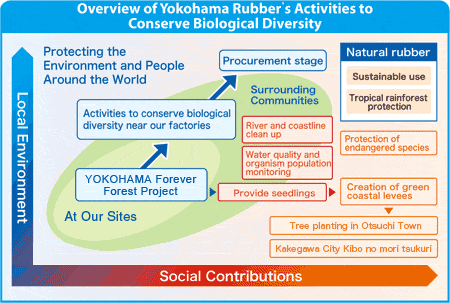
Measures for vision achievement
We believe that business risks to biodiversity are particularly high in the raw material procurement and production stages of our business activities.
In the raw material procurement stage, the procurement of natural rubber is considered to have a particularly high business impact, while in the production stage, the business impact of water intake and discharge associated with land use and water use at our business sites is considered to be high.
The locations of our offices differ in terms of geography, history, and culture. Because the living things that live at these locations also differ, we believe that it is necessary to assess the situation and establish issues for each office, and based on this we deploy our biodiversity conservation activities in stages. After gaining a general understanding of the environments surrounding offices, including waters, green areas, nature reserves, residences, and plants, we conduct surveys on the water quality of rivers that our business activities have an effect on, and monitoring of observed wildlife in the communities surrounding offices that have been surveyed, and specify the organisms subject to assessment. Through monitoring throughout the year, we assess the impact of our business activities, determine which organisms are subject to preservation, conduct preservation activities, and release the results.
In water quality surveys, we measure water temperature, electrical conductivity, pH, etc., and in the monitoring of organisms, we conduct bird observation, vegetation surveys, and observation of aquatic organisms and insects.
In the raw material procurement stage, the procurement of natural rubber is considered to have a particularly high business impact, while in the production stage, the business impact of water intake and discharge associated with land use and water use at our business sites is considered to be high.
The locations of our offices differ in terms of geography, history, and culture. Because the living things that live at these locations also differ, we believe that it is necessary to assess the situation and establish issues for each office, and based on this we deploy our biodiversity conservation activities in stages. After gaining a general understanding of the environments surrounding offices, including waters, green areas, nature reserves, residences, and plants, we conduct surveys on the water quality of rivers that our business activities have an effect on, and monitoring of observed wildlife in the communities surrounding offices that have been surveyed, and specify the organisms subject to assessment. Through monitoring throughout the year, we assess the impact of our business activities, determine which organisms are subject to preservation, conduct preservation activities, and release the results.
In water quality surveys, we measure water temperature, electrical conductivity, pH, etc., and in the monitoring of organisms, we conduct bird observation, vegetation surveys, and observation of aquatic organisms and insects.
Move the screen to the left or right to see the table information
| Business location | Location | Water quality* | Aquatic life | Vegetation | Wild birds | Insect | Other | |
|---|---|---|---|---|---|---|---|---|
| In Japan | Mie Plant | Within premises | ○ | ○ | ○ | ○ | ○ | |
| Outside premises | ○ | ○ | ○ | ○ | ○ | Loggerhead turtle | ||
| Mishima Plant | Outside premises | ○ | ○ | ○ | ||||
| Shinshiro Plant | Within premises | ○ | ○ | ○ | ||||
| Outside premises | ○ | ○ | Amphibians | |||||
| Onomichi Plant | Within premises | ○ | ○ | ○ | ||||
| Outside premises | ○ | ○ | ○ | ○ | ||||
| Hiratsuka Factory | Within premises | ○ | ○ | ○ | ○ | ○ | ||
| Outside premises | ○ | ○ | ○ | ○ | ○ | |||
| Ibaraki Plant | Within premises | ○ | ○ | ○ | ○ | Creating an environment for Grey-faced buzzard (Amphibians, Reptiles) |
||
| Outside premises | ○ | ○ | ○ | ○ | ||||
| Nagano Plant | Outside premises | ○ | ○ | ○ | ○ | |||
| Yokohama Tire Retread Hokkaido Plant | Outside premises | ○ | ○ | ○ | ○ | ○ | ||
| Yokohama Tire Retread Nagoya Plant | Within premises | ○ | Biotope | |||||
| Yokohama Tire Retread Onomichi Plant | Outside premises | ○ | ○ | ○ | ○ | ○ | ||
| Yokohama Mold | Outside premises | ○ | ○ | ○ | ○ | |||
| Overseas | YTMT (Thailand) | Within premises | ○ | ○ | ○ | |||
| YTRC (Thailand) | Within premises | ○ | ○ | ○ | ||||
| Y-CH (China) | Outside premises | Laojunshan Project | ||||||
| CHZY (China) | Within premises | ○ | ○ | ○ | ||||
| Outside premises | ○ | ○ | ○ | ○ | ○ | |||
| CSZY (China) | Within premises | ○ | ○ | ○ | ||||
| YTPI (Philippines) | Within premises | ○ | ○ | ○ | ||||
| Outside premises | ○ | ○ | ○ | Watershed conservation | ||||
| YTMV (United States) | Within premises | ○ | ○ | Mammals | ||||
| YRPZ (Russia) | Within premises | Growth of pine trees | ||||||
| YTVI (Vietnam) | Outside premises | ○ |
- Presence or absence of biodiversity activities

YOKOHAMA Forever Forest Activities
A cumulative total of 628,000 trees have been planted as of the end of 2021. The cumulative total including the number of seedlings provided equates to 1,090,000 trees. This marks an 84% achievement rate for the target of 1.3 million trees by 2030. In order to assess the growth and environmental changes of the Forever Forest, we conduct surveys on the amount of growth (measurement of tree height and diameter at breast height) and surveys on wild birds observed within plant premises.
From surveys on the growth amount of seedlings, we have calculated the amount of carbon dioxide fixed by the YOKOHAMA Forever Forest Activities.
We estimate that by the end of 2021, the entire YOKOHAMA Forever Forest will have absorbed 1,576 tons of CO2.
In wild bird surveys at the Hiratsuka Factory, 61 species of wild birds have been observed on plant premises up until now. From the third year of tree planting, we began to see brown-headed thrushes that have a penchant for forests. We believe this reflects how the Forever Forest is functioning as it should as a forest for wild birds. In addition, we observed the crowned willow warbler and the great reed warbler that is seen near water, which suggests that the Forever Forest is functioning as a stopover for wild birds as they move throughout their habitat.
Furthermore, it has been confirmed that the forest is used for nesting white-eyes and for raising a variety of birds, suggesting that the forest contributes to the breeding of wild birds.
From surveys on the growth amount of seedlings, we have calculated the amount of carbon dioxide fixed by the YOKOHAMA Forever Forest Activities.
We estimate that by the end of 2021, the entire YOKOHAMA Forever Forest will have absorbed 1,576 tons of CO2.
In wild bird surveys at the Hiratsuka Factory, 61 species of wild birds have been observed on plant premises up until now. From the third year of tree planting, we began to see brown-headed thrushes that have a penchant for forests. We believe this reflects how the Forever Forest is functioning as it should as a forest for wild birds. In addition, we observed the crowned willow warbler and the great reed warbler that is seen near water, which suggests that the Forever Forest is functioning as a stopover for wild birds as they move throughout their habitat.
Furthermore, it has been confirmed that the forest is used for nesting white-eyes and for raising a variety of birds, suggesting that the forest contributes to the breeding of wild birds.
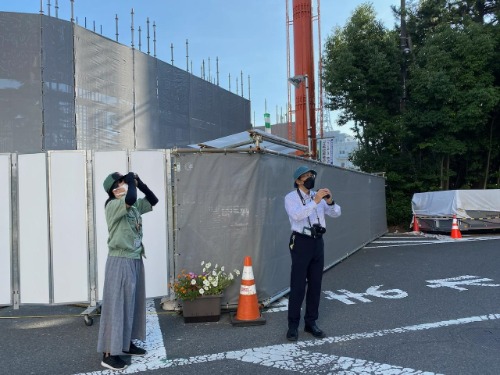
Continued observation with limited number of people under COVID-19
Review of FY 2021 Activities
Announcement of procurement policy aimed at maintaining natural rubber as a sustainable resource
Yokohama Rubber announced the Sustainable Natural Rubber Procurement Policy in October 2018 to make natural rubber a sustainable resource. In addition, we participated as a founding member of the international platform GPSNR (Global Platform for Sustainable Natural Rubber) and started activities.
Furthermore, we revised our procurement policy in September 2021 to incorporate GPSNR's policy framework into our procurement policy, and have clarified our will to achieve a higher level of sustainability for natural rubber.
In 2019, Yokohama Rubber started surveying farms in Surat Thani district, Thailand and visited 250 farms by the end of June 2022.
So far, we have not found any human rights violations or deforestation, but through the survey, we have learned about the issues faced by farmers and the problems to be solved. This survey will be continued and we plan to survey 500 households in total by the end of 2023.
In January 2020, Yokohama rubber signed a Memorandum of Understanding (MOU) with the Rubber Authority of Thailand (RAOT) to provide economic support for natural rubber farmers and improving traceability to ensure the transparency and soundness of the supply chain.
Under the MOU, seminar events for natural rubber farmers have been held since December 2020. Three such events have been held to date, attended by a total of 150 farmers, and a total of 50 tons of fertilizer has been provided free of charge based on RAOT's findings.
Furthermore, we revised our procurement policy in September 2021 to incorporate GPSNR's policy framework into our procurement policy, and have clarified our will to achieve a higher level of sustainability for natural rubber.
In 2019, Yokohama Rubber started surveying farms in Surat Thani district, Thailand and visited 250 farms by the end of June 2022.
So far, we have not found any human rights violations or deforestation, but through the survey, we have learned about the issues faced by farmers and the problems to be solved. This survey will be continued and we plan to survey 500 households in total by the end of 2023.
In January 2020, Yokohama rubber signed a Memorandum of Understanding (MOU) with the Rubber Authority of Thailand (RAOT) to provide economic support for natural rubber farmers and improving traceability to ensure the transparency and soundness of the supply chain.
Under the MOU, seminar events for natural rubber farmers have been held since December 2020. Three such events have been held to date, attended by a total of 150 farmers, and a total of 50 tons of fertilizer has been provided free of charge based on RAOT's findings.
Communication with communities
Hiratsuka Factory has been holding open-house event “Think Eco Hiratsuka”. One of the programs was a biodiversity panel discussion held online from 2020.
In March 2022, Mr. Masato Ohno, Director of the Conservation Division of the Nature Conservation Society of Japan, gave a keynote speech on the theme of "Biodiversity Conservation Protected in Watersheds," which was followed by an introduction and discussion of initiatives at our plants.
The event was attended by employees of production sites including group companies, relevant government officials, local residents, and environmental NPOs.
In March 2022, Mr. Masato Ohno, Director of the Conservation Division of the Nature Conservation Society of Japan, gave a keynote speech on the theme of "Biodiversity Conservation Protected in Watersheds," which was followed by an introduction and discussion of initiatives at our plants.
The event was attended by employees of production sites including group companies, relevant government officials, local residents, and environmental NPOs.
Employee education
We are working on biodiversity conservation through our business activities. In order to ensure that all employees are aware of the blessings of biodiversity and act accordingly, we are working to spread awareness of biodiversity among employees through personnel training.
One of the mandatory training courses for young employees covers biodiversity; in fiscal 2021, it was conducted via video-on-demand due to the spread of the COVID-19.
One of the mandatory training courses for young employees covers biodiversity; in fiscal 2021, it was conducted via video-on-demand due to the spread of the COVID-19.
Introduction of Initiatives
Hiratsuka Factory
Since fiscal 2013, the Hiratsuka Factory has been engaged in biodiversity conservation activities aimed at protecting the water resources of the Kaname River system that flows through the region.
Employees have participated in a series of hands-on monitoring activities to examine the environment of the Kaname River, with a cumulative total of 346 employees taking part.
Currently, we are working in a satoyama in the city located upstream of the Kaname River.
Specifically, we are working with people from local groups and university laboratories to carry out conservation activities, including the installation of handmade biotopes, with the aim of recharging the water source of the Kaname River and restoring the original landscape of the satoyama, and monitoring changes in the ecosystem.
As a result of the above activities, we were able to reduce the amount of specified alien plants, but the conservation effect, i.e., whether biodiversity was protected by reducing the number of non-native plants, was not clear.
Based on the review, we have decided to put an end to the conservation activities in the Kaname River.
(Monitoring will be continued)
Employees have participated in a series of hands-on monitoring activities to examine the environment of the Kaname River, with a cumulative total of 346 employees taking part.
Currently, we are working in a satoyama in the city located upstream of the Kaname River.
Specifically, we are working with people from local groups and university laboratories to carry out conservation activities, including the installation of handmade biotopes, with the aim of recharging the water source of the Kaname River and restoring the original landscape of the satoyama, and monitoring changes in the ecosystem.
As a result of the above activities, we were able to reduce the amount of specified alien plants, but the conservation effect, i.e., whether biodiversity was protected by reducing the number of non-native plants, was not clear.
Based on the review, we have decided to put an end to the conservation activities in the Kaname River.
(Monitoring will be continued)
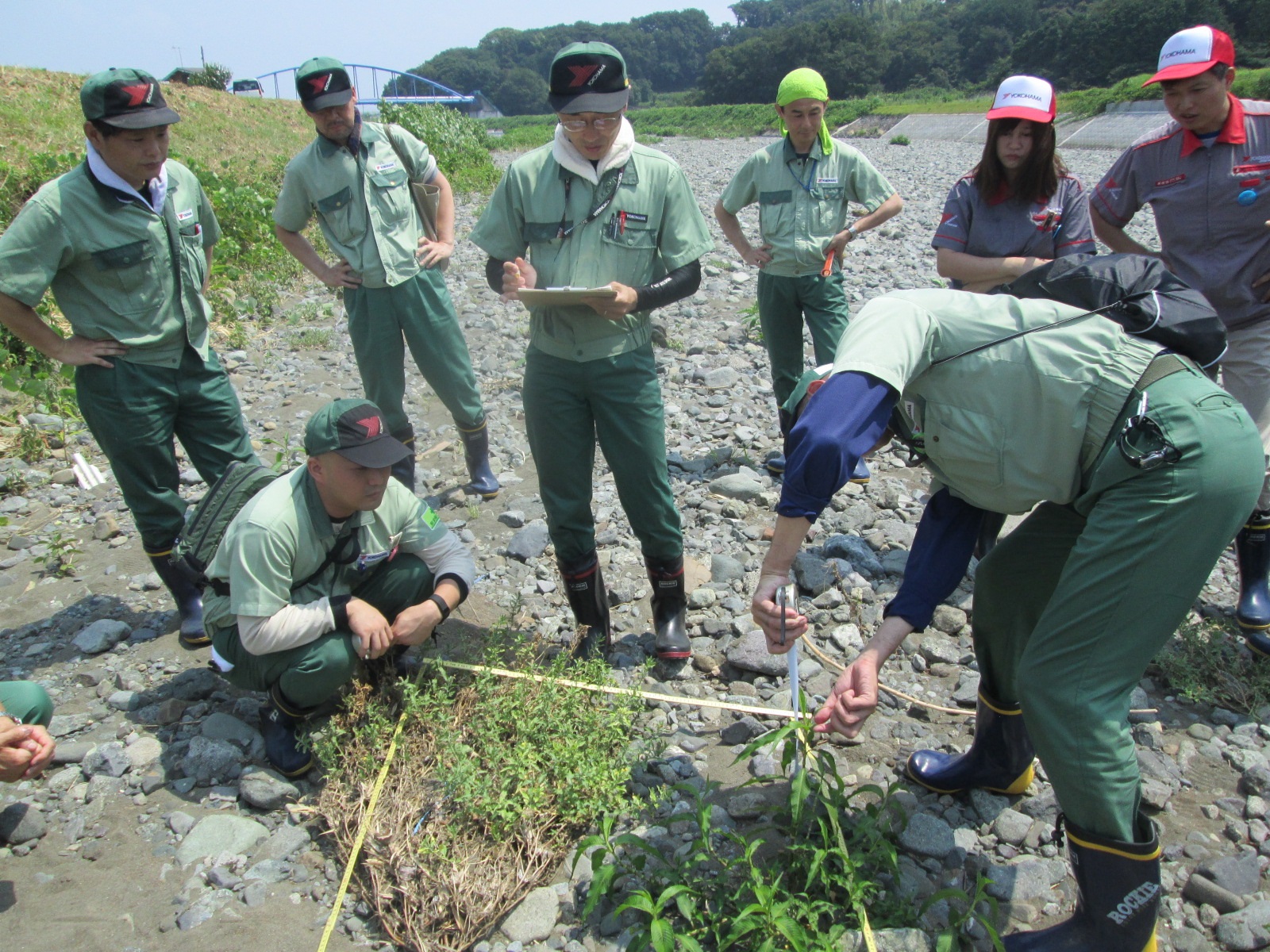
Vegetation survey at Kaname River
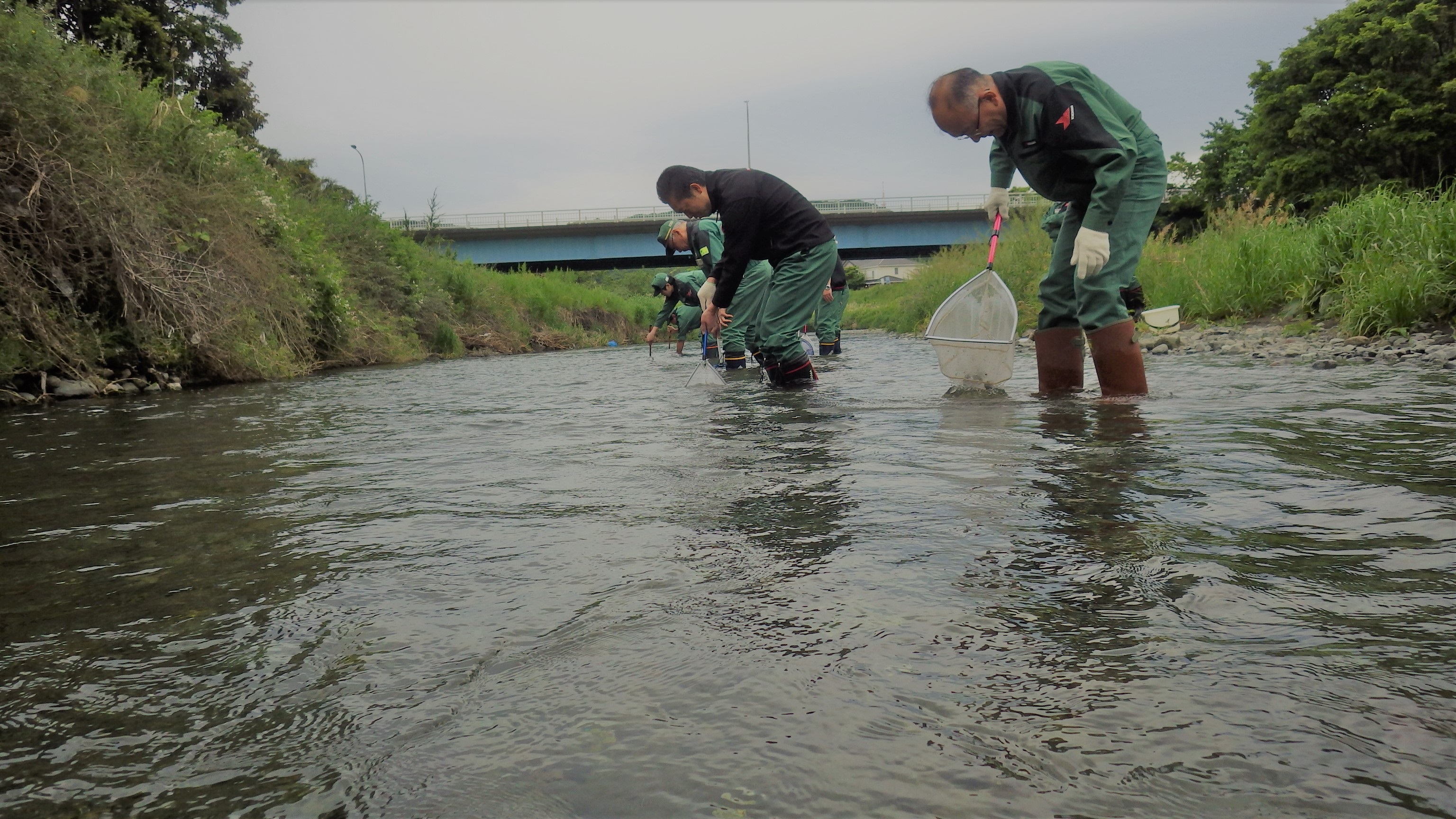
Aquatic life survey at Kaname River
In March each year, at the invitation of the Kaname River Basin Watershed Network, we conduct river cleanup activities in collaboration with local government authorities and civic organizations.
In 2020, this event was cancelled due to the effects of the COVID-19.
In addition, We started activities to create a handmade biotope in a valley field by borrowing fallow land near Komagataki Falls in Tsuchiya district of Hiratsuka City and restore the neglected cedar forest around the valley in 2015.
With the cooperation of Kanagawa University, we have also started to conduct surveys on changes in illumination level due to cedar thinning in the same area.
We zoned the field into several plots, and decided on target species, activities, and the target image, so that we can understand the effects and goals of the activities.
In 2020, this event was cancelled due to the effects of the COVID-19.
In addition, We started activities to create a handmade biotope in a valley field by borrowing fallow land near Komagataki Falls in Tsuchiya district of Hiratsuka City and restore the neglected cedar forest around the valley in 2015.
With the cooperation of Kanagawa University, we have also started to conduct surveys on changes in illumination level due to cedar thinning in the same area.
We zoned the field into several plots, and decided on target species, activities, and the target image, so that we can understand the effects and goals of the activities.
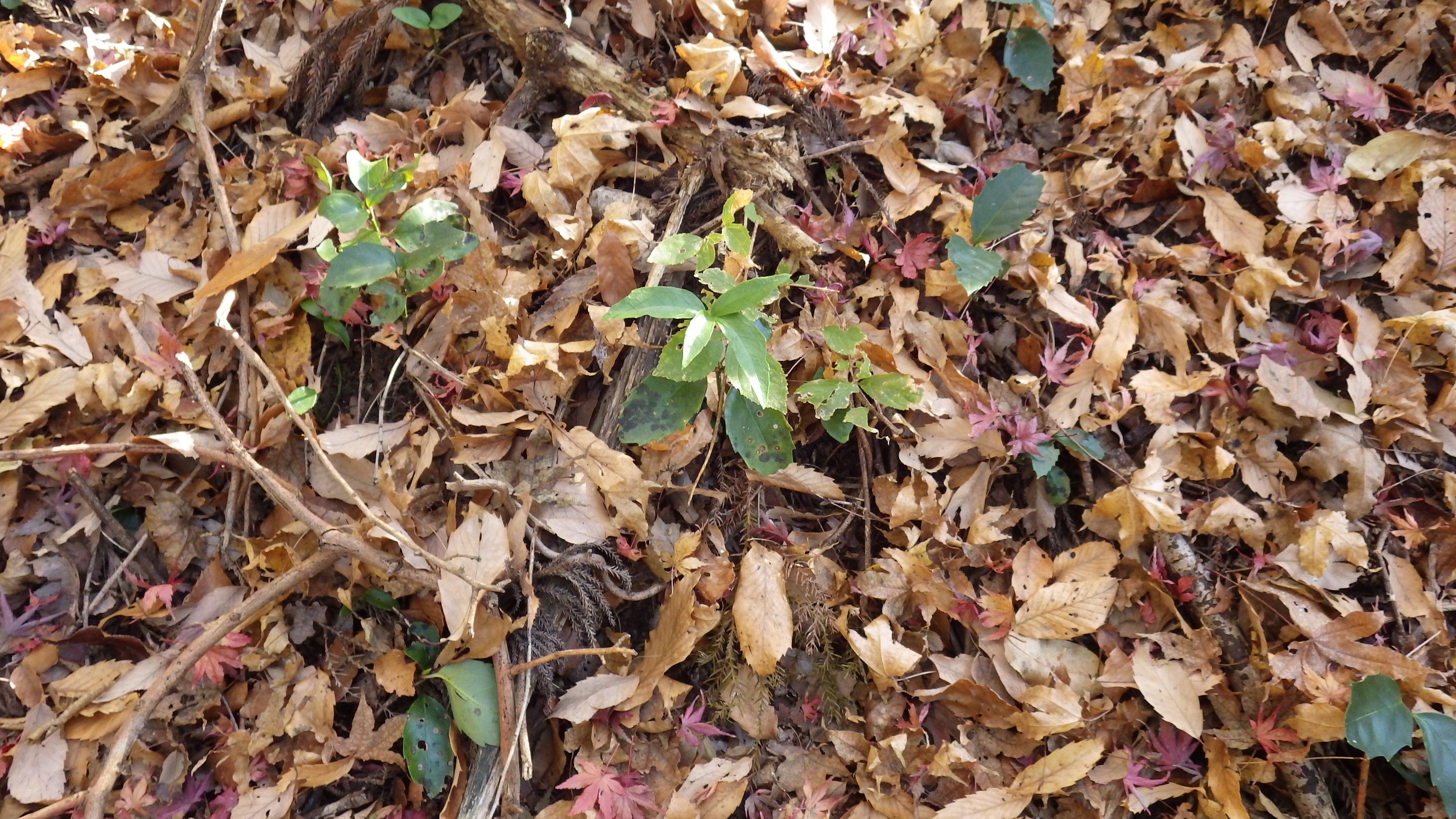
Forest floor change in cedar forest and seedlings of deciduous tree
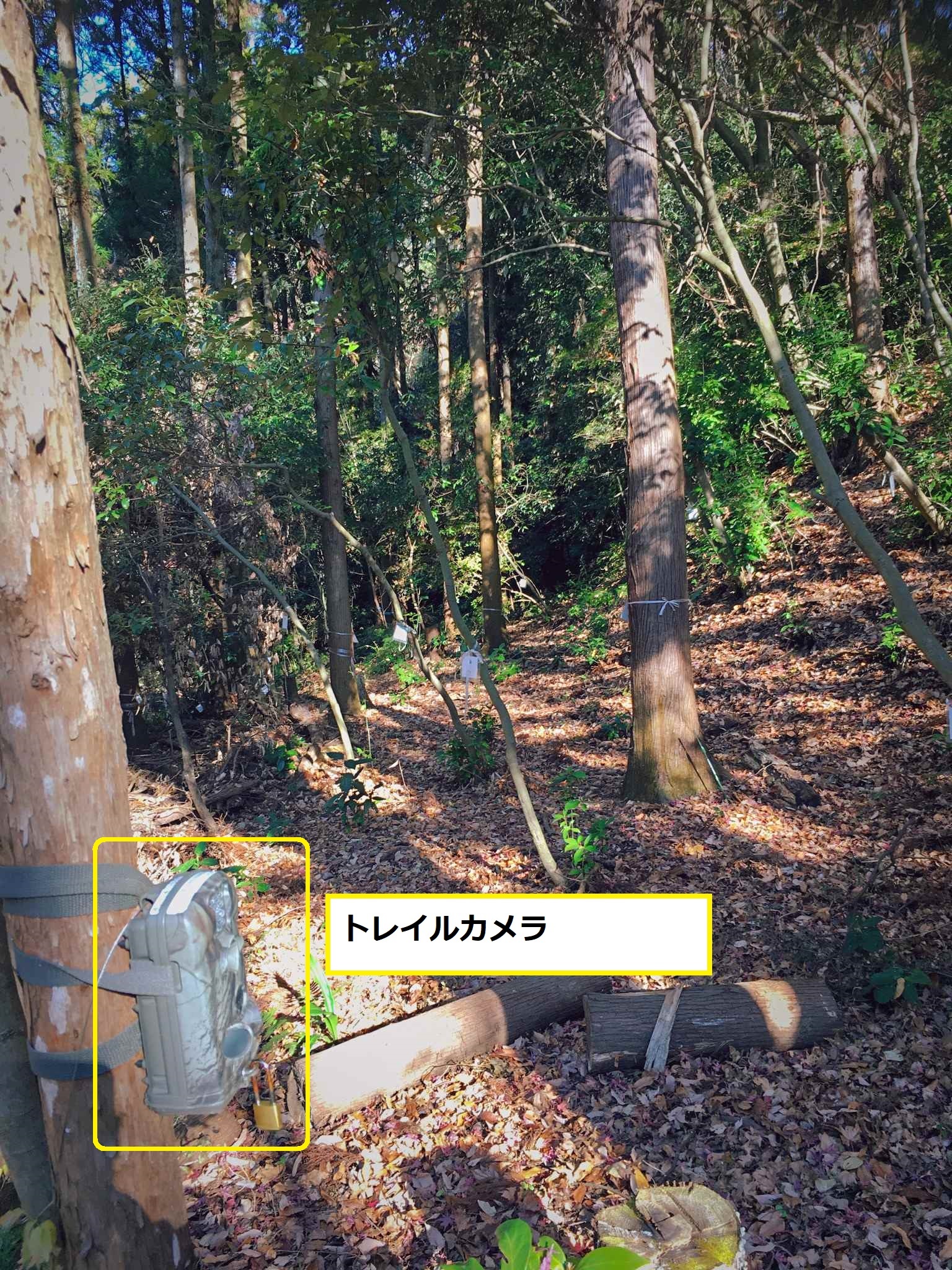
Trail camera set up in the forest
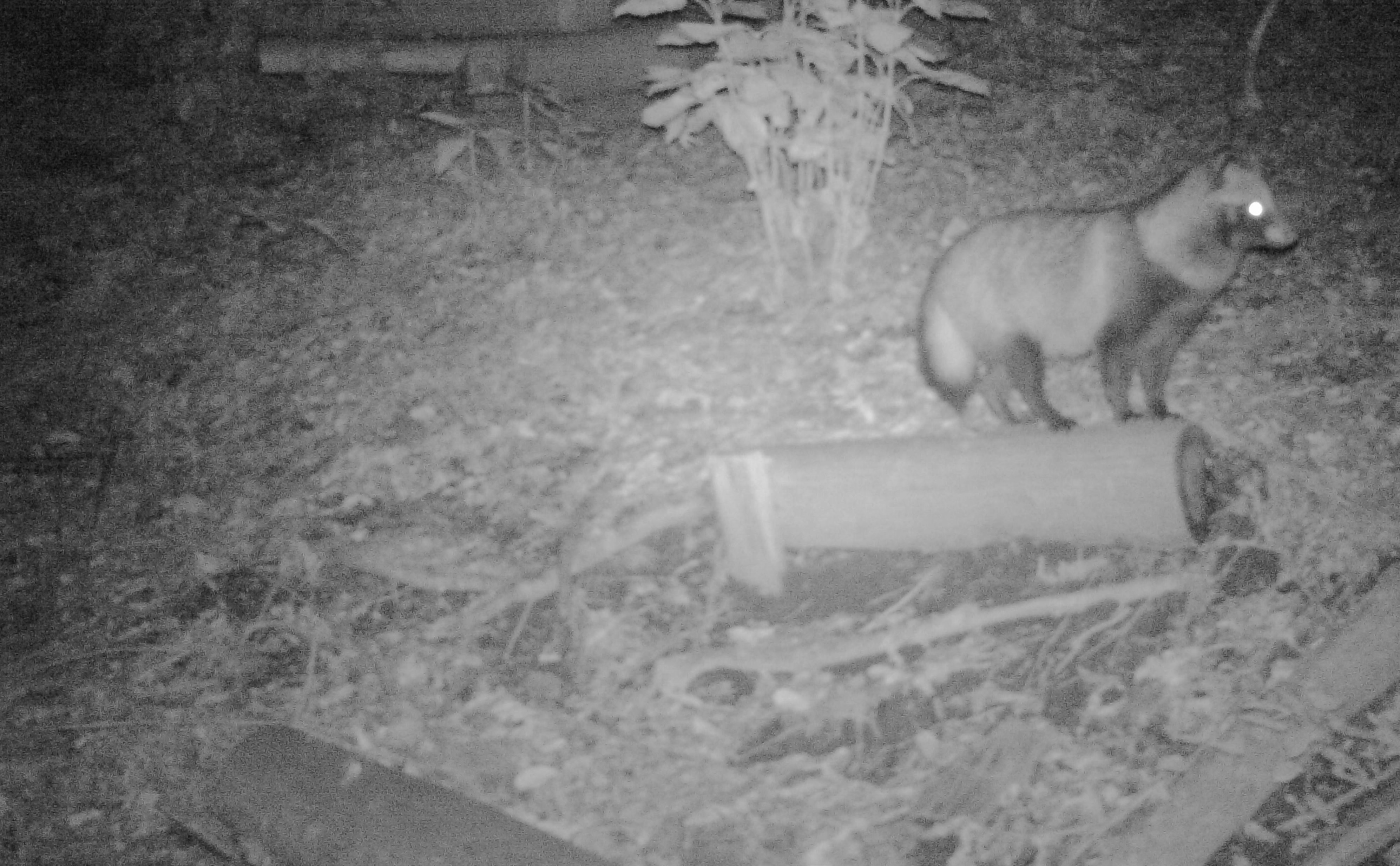
A Japanese raccoon appeared in the survey area
In May 2017, a “dragonfly pond” was made in the grounds of the Hiratsuka Factory through manual labor, and activities began to be held to enable people to experience for themselves our links with other living things by observing the dragonflies, butterflies, frogs etc. that congregate at the pond.
These activities to conserve biological diversity and our ongoing surveys of fixed amounts of CO2 absorption associated with the growth of the Forever Forest planted in and around the site in 2007 were recognized with Association for Business Innovation in Harmony with Nature and Community (ABINC) certification as a plant that is considerate of biodiversity in March 2017.
These activities to conserve biological diversity and our ongoing surveys of fixed amounts of CO2 absorption associated with the growth of the Forever Forest planted in and around the site in 2007 were recognized with Association for Business Innovation in Harmony with Nature and Community (ABINC) certification as a plant that is considerate of biodiversity in March 2017.
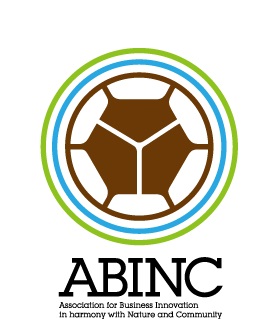
ABINC certification
Including participation in the Hiratsuka Biodiversity Promotion Council, a biodiversity initiative promoted by Hiratsuka City, we are also expanding activities for ecosystem conservation in Hiratsuka.
Mie Plant
Three teams are continuing to implement biodiversity conservation activities as follows.
- “Black Team”: Surveying water quality and aquatic organisms such as Japanese Ricefish in rivers discharged from the plant (Hinokijiri River and Hotosu River)
- “Noppo Team”: Removing alien species and measuring the number of native plants, and surveying the spawning of loggerhead turtles (Caretta caretta) on the coast (Ominato Coast) where the water flows downstream
- “Chibikko Team”: Creating a biotope in the plant's regulating pond, surveying water quality, insects such as dragonflies, aquatic organisms, and vegetation
In FY2021, Ominato Elementary School was closed and Minato Elementary School was opened, and we resumed delivery classes for the first time in two years. We presented a picture-story show about why we planted trees, held a competition to remove invasive alien plant, Komatsuyosigusa, and cleaned up trash on the beach at the request of the school.
Due to COVID-19, the annual tree-planting and biodiversity conservation activities could not be held, and the environmental education program is now in jeopardy.
In March 2022, we acquired Association for Business Innovation in Harmony with Nature and Community (ABINC) certification as a biodiversity-conscious factory.
Due to COVID-19, the annual tree-planting and biodiversity conservation activities could not be held, and the environmental education program is now in jeopardy.
In March 2022, we acquired Association for Business Innovation in Harmony with Nature and Community (ABINC) certification as a biodiversity-conscious factory.
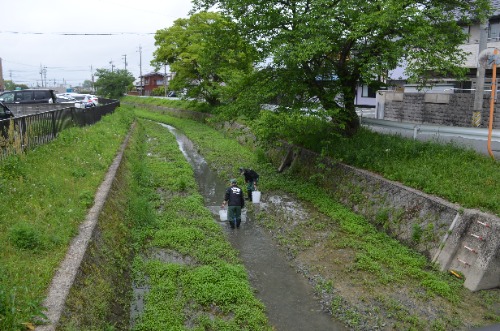
Aquatic life survey at Hinokijiri River
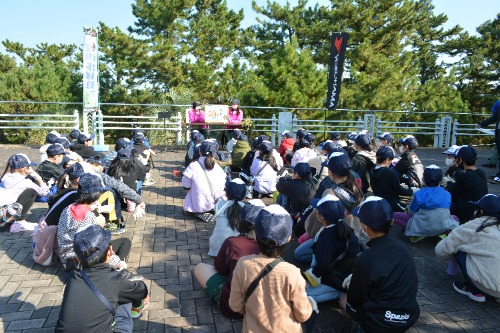
A school teacher explained the meaning of tree planting using a picture-story show at Ominato Beach.
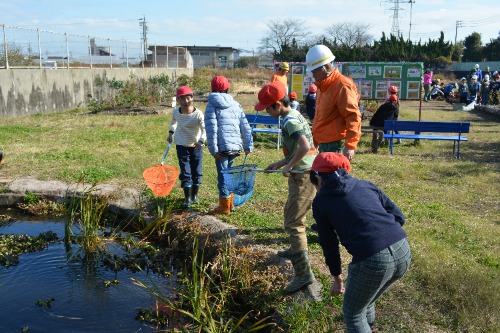
Living creature observation in biotope inviting elementary school students
Mishima Plant
The factory discharges water into the Goten River, and we had three teams—“Loach Team,” “Softshell Turtle Team,” and “Eel Team”—carry out ongoing surveys into water quality and wildlife.
In the Goton River, there are dragonfly and damselfly yagos, fish such as oikawa and kawamatsu, reptiles such as spoonbills and red-eared turtles, and kingfishers, the symbol of Mishima City, which are rare in a factory, have taken up residence.
On the other hand, there is a lot of garbage dumped in the river, and we have been cleaning the river after monitoring in order to contribute in some small way to keep the Goten River beautiful.
Therefore, in May 2019, the Numazu Civil Engineering Office of Shizuoka Prefecture, Mishima City, and Mishima Plant signed a "River Friendship Agreement".
Three teams from the Mishima Plant then worked with the Numazu Civil Engineering Office of Shizuoka Prefecture to install the "barbed construction method".
Under the guidance of Dr. Kitazawa of Ecology Path, in 2021, we conducted a post-implementation check of the "barbed construction" and biological observation, which confirmed that the creatures that had almost disappeared after the river dredging had started to return again.
In the Goton River, there are dragonfly and damselfly yagos, fish such as oikawa and kawamatsu, reptiles such as spoonbills and red-eared turtles, and kingfishers, the symbol of Mishima City, which are rare in a factory, have taken up residence.
On the other hand, there is a lot of garbage dumped in the river, and we have been cleaning the river after monitoring in order to contribute in some small way to keep the Goten River beautiful.
Therefore, in May 2019, the Numazu Civil Engineering Office of Shizuoka Prefecture, Mishima City, and Mishima Plant signed a "River Friendship Agreement".
Three teams from the Mishima Plant then worked with the Numazu Civil Engineering Office of Shizuoka Prefecture to install the "barbed construction method".
Under the guidance of Dr. Kitazawa of Ecology Path, in 2021, we conducted a post-implementation check of the "barbed construction" and biological observation, which confirmed that the creatures that had almost disappeared after the river dredging had started to return again.
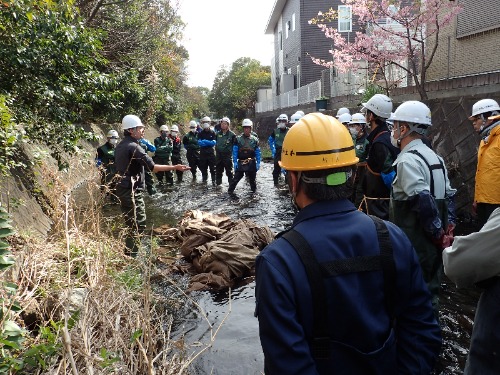
Construction of "barbed construction" in collaboration with river jurisdiction
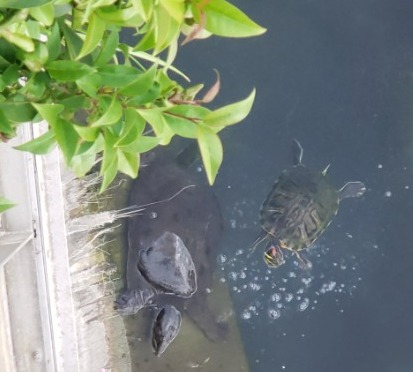
Spoons, loggerhead turtles, and catfish observed during monitoring
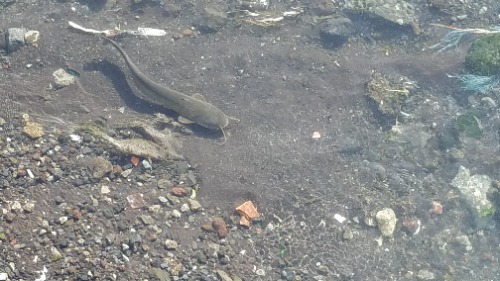
Spoons, loggerhead turtles, and catfish observed during monitoring
Shinshiro Plant
In 2021, biodiversity conservation activities kicked off with a total of 75 people in three teams working at three sites in the water source area. These are the terraced rice paddies in Yotsuya, the Noda River, the Kuroda River, and the biotope in the factory.
However, due to the prevention of the spread of COVID-19 infection, each team leader and secretariat member had to conduct only water quality surveys and some biological monitoring in a limited number of people and in a limited time, and could not conduct the conventional activities as in 2020.
However, due to the prevention of the spread of COVID-19 infection, each team leader and secretariat member had to conduct only water quality surveys and some biological monitoring in a limited number of people and in a limited time, and could not conduct the conventional activities as in 2020.
<Yotsuya Rice Terraces, Shinshiro City: One of the water source areas of the Toyokawa River>
As a water source for the industrial cooling water, we are working to secure a habitat for biotic communities, help maintain clear streams and near threatened species, protect and restore water-related ecosystems, and support a desirable ecological habitat in the rice terraces.
Creatures to be protected: Near Threatened (NT) species such as Japanese fire belly newt (Cynops pyrrhogaster) and Forest Green Tree Frog (Zhangixalus arboreu).
As a water source for the industrial cooling water, we are working to secure a habitat for biotic communities, help maintain clear streams and near threatened species, protect and restore water-related ecosystems, and support a desirable ecological habitat in the rice terraces.
Creatures to be protected: Near Threatened (NT) species such as Japanese fire belly newt (Cynops pyrrhogaster) and Forest Green Tree Frog (Zhangixalus arboreu).
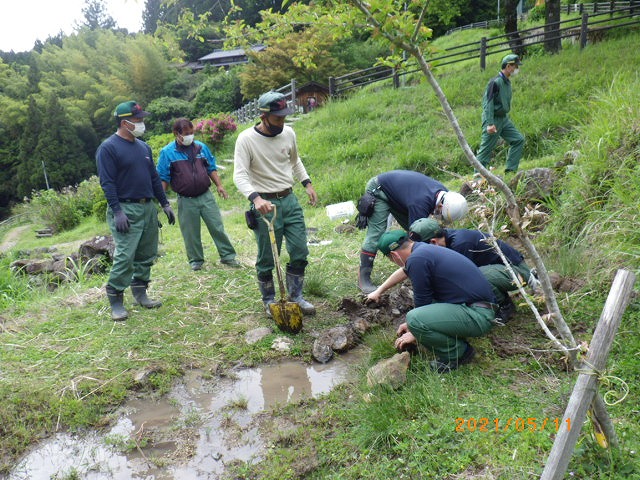
Conservation activities at Yotsuya Senmaida
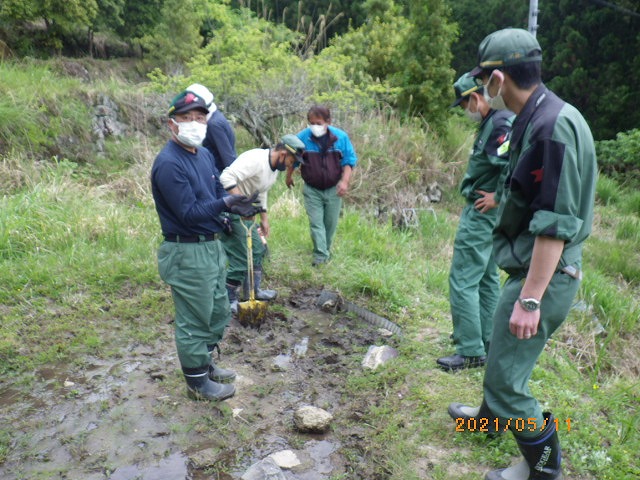
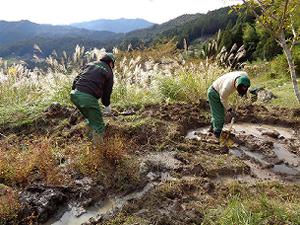
Conservation activities at Yotsuya Senmaida
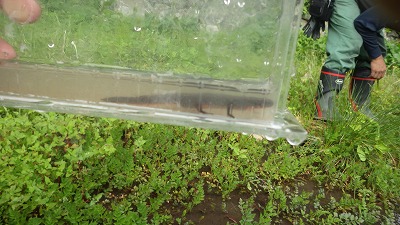
Red-bellied newt identified during monitoring
<Noda River and Kuroda River: Water Quality and Aquatic Life Monitoring Survey>
We confirmed that wastewater discharged from the Shinshiro and Shinshiro-Minami plants did not adversely affect water quality and aquatic life in the local rivers, and carried out activities to maintain and sustain this status.
We confirmed that wastewater discharged from the Shinshiro and Shinshiro-Minami plants did not adversely affect water quality and aquatic life in the local rivers, and carried out activities to maintain and sustain this status.
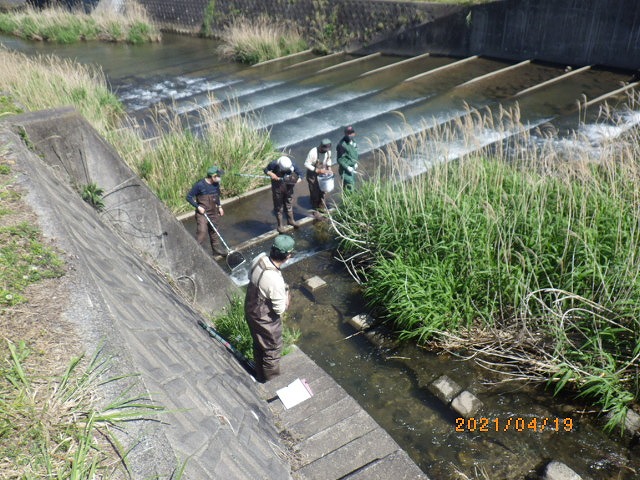
Monitoring of living creatures in the Noda River
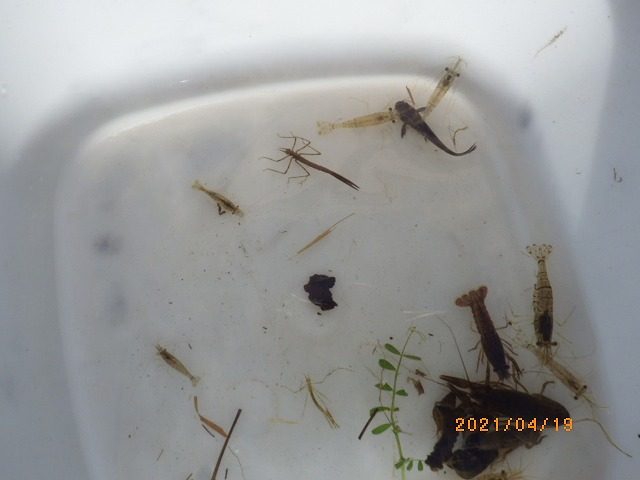
Aquatic organisms identified during monitoring
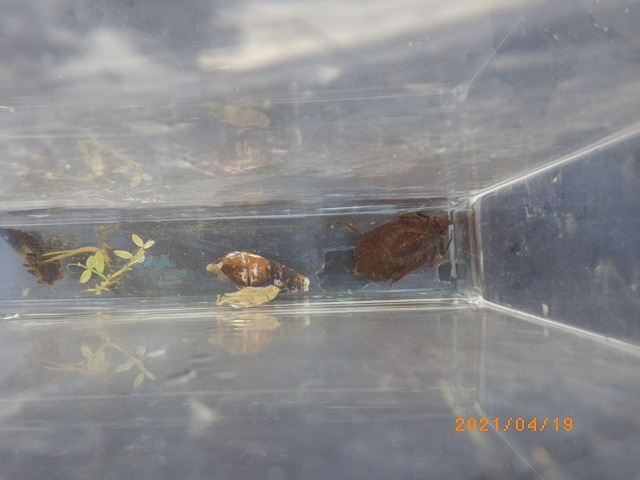
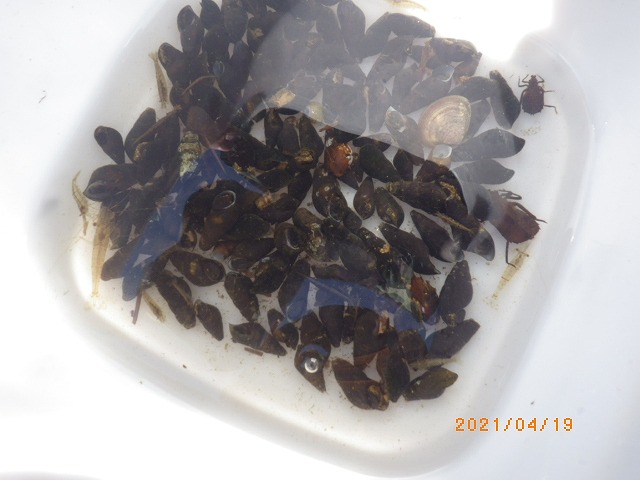
Aquatic organisms identified during monitoring
<Biotope in the plant>
The Shinshiro Plant takes cooling water used in the plant from a river near the plant.
Since 2010, we have been observing whether we can create an environment where living creatures can live even with plant wastewater by filtering the wastewater used and introducing it to the biotope inside the plant as a theme of our biodiversity conservation activities.
We also conduct maintenance and restoration work around the biotope every year.
The Shinshiro Plant takes cooling water used in the plant from a river near the plant.
Since 2010, we have been observing whether we can create an environment where living creatures can live even with plant wastewater by filtering the wastewater used and introducing it to the biotope inside the plant as a theme of our biodiversity conservation activities.
We also conduct maintenance and restoration work around the biotope every year.
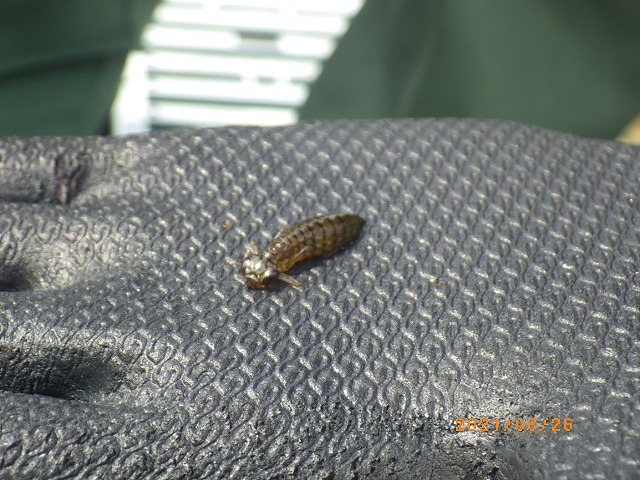
Yago (dragonfly) and tadpoles observed in the biotope inside the plant
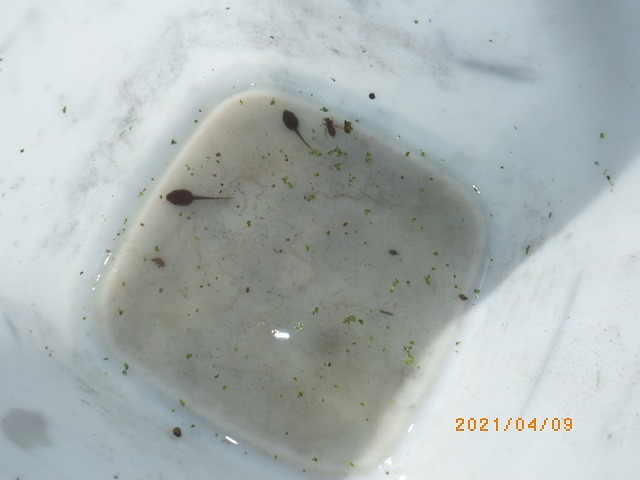
Yago (dragonfly) and tadpoles observed in the biotope inside the plant
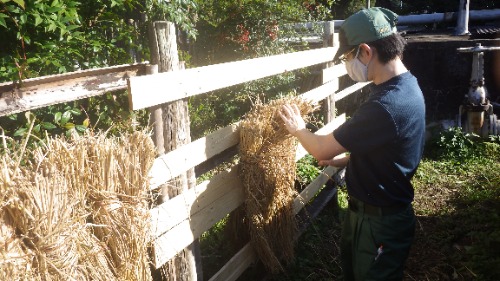
Maintenance and restoration activities around the biotope
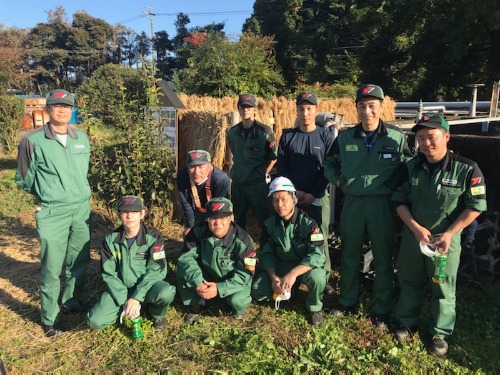
Maintenance and restoration activities around the biotope
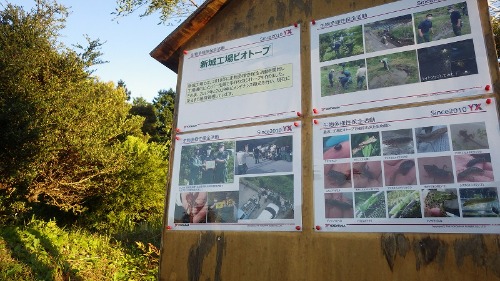
Signboard installed in the biotope
Thirteen employees from the Shinshiro Plant participated in a tree-planting bus tour organized by the Shinshiro Shitara Ecosystem Network Council. The Shinshiro Plant provided 650 seedlings and supported tree planting by the general public.
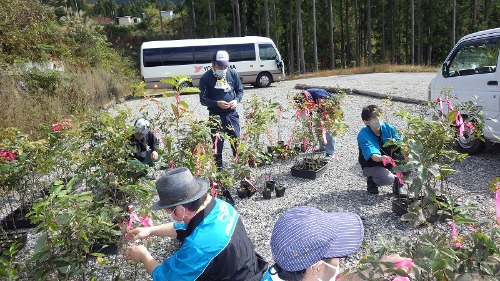
Tree planting bus tour ( Toei-cho, Kitashitara-gun, Aichi Prefecture, Japan)
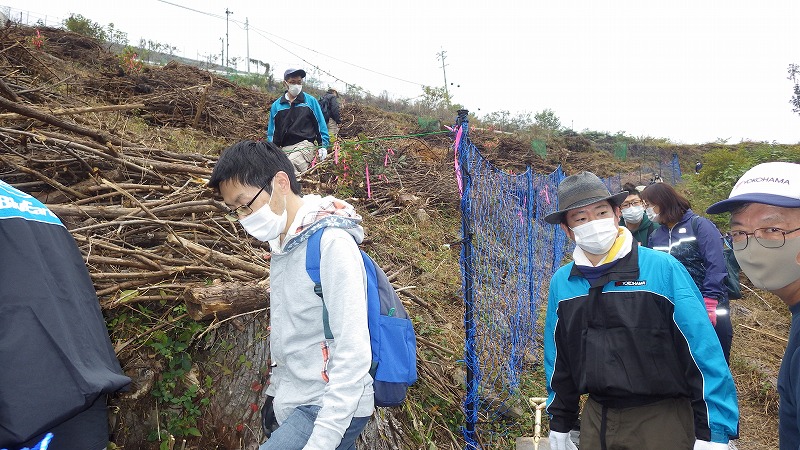
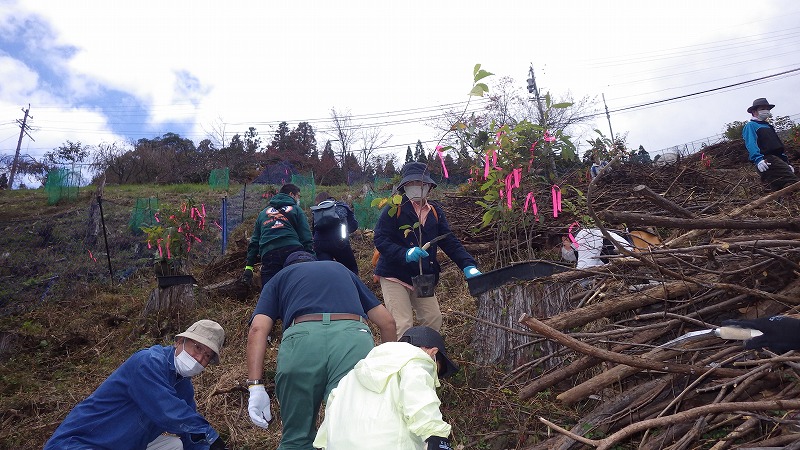
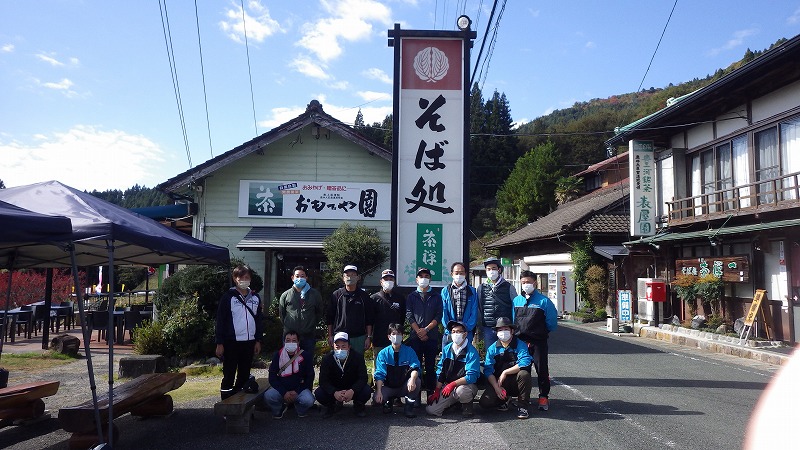
Tree planting bus tour ( Toei-cho, Kitashitara-gun, Aichi Prefecture, Japan)
Onomichi Plant
At the Onomichi Plant, we began in 2013 to conduct water quality surveys and surveys of aquatic organisms, birds, and plants at the Nishifuji Water Park on the Fujii River, and to observe wild birds and insects on the plant premises.
Surveys of aquatic life in the Fujii River found aquatic insects including Ephemera strigata, dragonfly nymphs such as Mnais costalis, and Asiagomphus melaenops, fish such as Gnathopogon elongatus and Rhinogobius nagoyae and crustaceans such as Eriocheir japonica and Palaemon paucidens.
Due to COVID-19, only bird watching and river cleanup activities were conducted in 2021.
Within the plant premises, a mosaic of different environments for living creatures is provided by the growth of the Forever Forest, bushes, grassland, rain fed ponds and wetlands, which provide habitats for dragonflies, butterflies, crickets and grasshoppers. It was also shown that the factory site contributes to the nesting of larks, the formation of territories of Lanius bucephalus and Phoenicurus auroreus, and the wintering of Horornis diphone.
The Fujii River Evening, which was to be held in June 2021, was cancelled due to COVID-19. However, at the Children's Environmental Festival held in July 2021 at the Onomichi City Environmental Resource and Recycling Center, we exhibited our conservation activities on the Fujii River, fixed-point observation of inhabiting organisms, and activities at the Onomichi Plant, among other things.
In addition, in 2020, we submitted an application for the renewal of the Certification of Association for Business Innovation in harmony with Nature and Community (ABINC), and received the renewal of the certification in February 2021.
We received the 2nd ABINC Award Special Prize for our efforts in environmental communication between local residents and employees using local seeds and seedlings.
Surveys of aquatic life in the Fujii River found aquatic insects including Ephemera strigata, dragonfly nymphs such as Mnais costalis, and Asiagomphus melaenops, fish such as Gnathopogon elongatus and Rhinogobius nagoyae and crustaceans such as Eriocheir japonica and Palaemon paucidens.
Due to COVID-19, only bird watching and river cleanup activities were conducted in 2021.
Within the plant premises, a mosaic of different environments for living creatures is provided by the growth of the Forever Forest, bushes, grassland, rain fed ponds and wetlands, which provide habitats for dragonflies, butterflies, crickets and grasshoppers. It was also shown that the factory site contributes to the nesting of larks, the formation of territories of Lanius bucephalus and Phoenicurus auroreus, and the wintering of Horornis diphone.
The Fujii River Evening, which was to be held in June 2021, was cancelled due to COVID-19. However, at the Children's Environmental Festival held in July 2021 at the Onomichi City Environmental Resource and Recycling Center, we exhibited our conservation activities on the Fujii River, fixed-point observation of inhabiting organisms, and activities at the Onomichi Plant, among other things.
In addition, in 2020, we submitted an application for the renewal of the Certification of Association for Business Innovation in harmony with Nature and Community (ABINC), and received the renewal of the certification in February 2021.
We received the 2nd ABINC Award Special Prize for our efforts in environmental communication between local residents and employees using local seeds and seedlings.
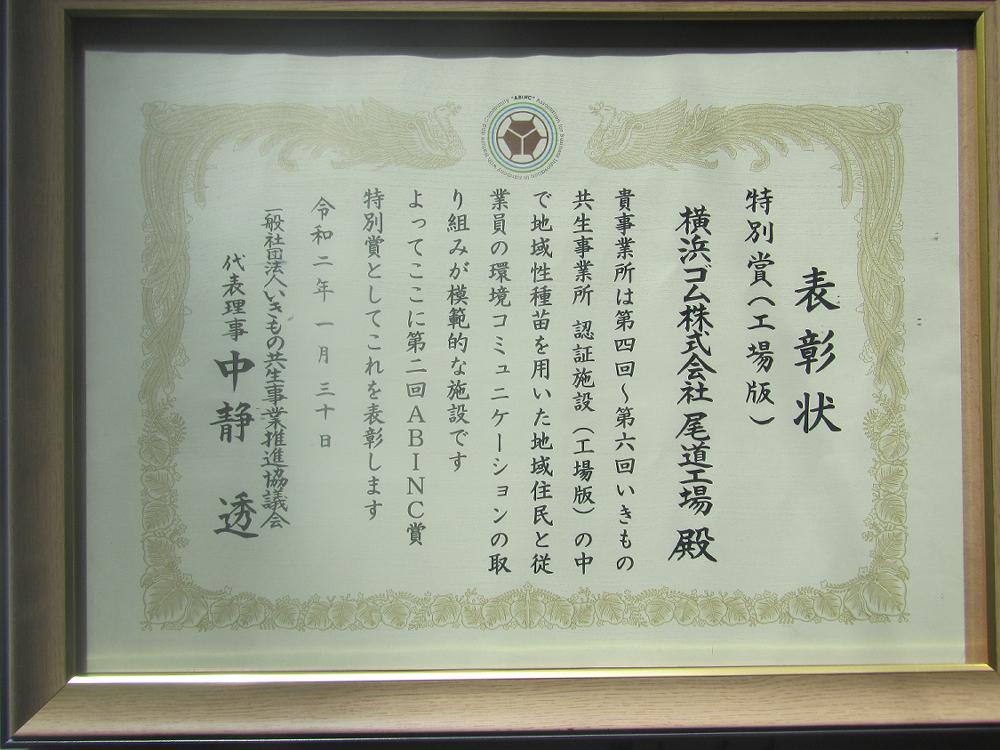
Received the 2nd ABINC Award Special Prize
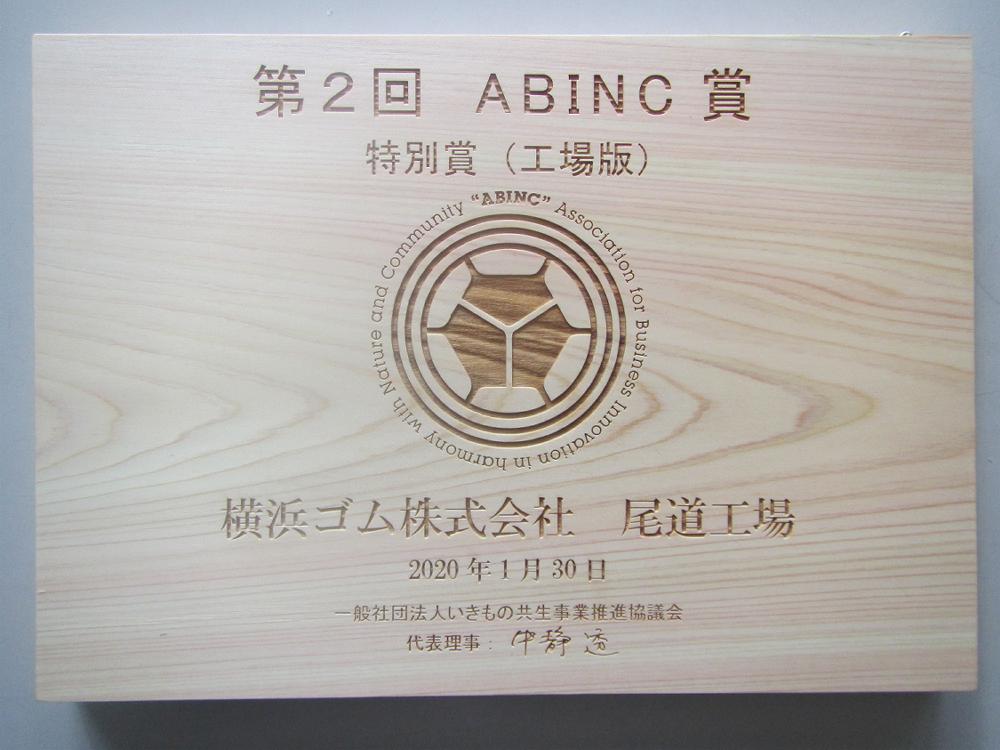
Received the 2nd ABINC Award Special Prize
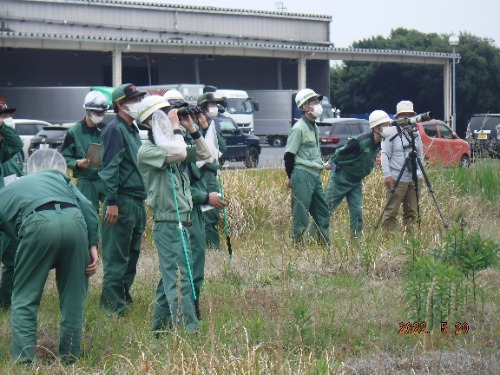
Bird watching at the plant
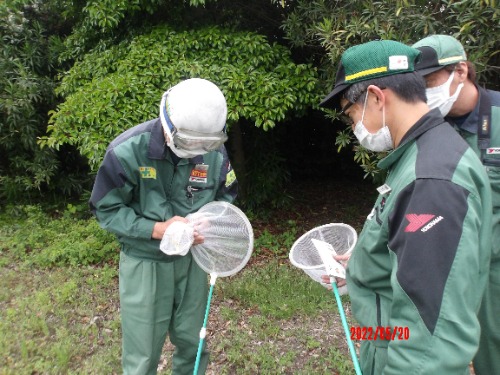
Bird watching at the plant
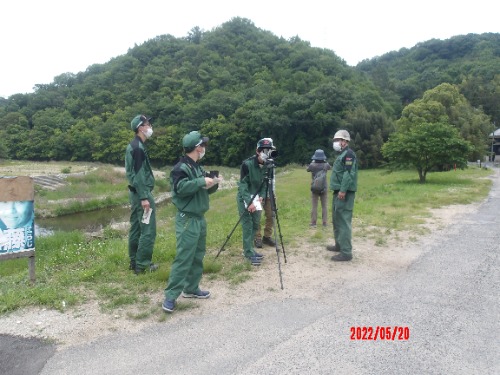
Bird watching at the Nishifuji Shinsui Park
Nagano Plant
The Nagano Plant is located in an area that is highly natural compared to other Yokohama Rubber plants. As there is almost no drainage other than rainwater, we believe the environmental impact of this plant is low compared to other plants of Yokohama Rubber.
Since the Nagano Plant is located on a river terrace of the Tenryu River, we started biodiversity conservation activities in the plant's adjustment pond in 2021 with the aim of restoring the hinterland wetland ecosystem of the Tenryu River within the plant site.
For this purpose, we have decided to exterminate the Japanese knotweed and variegated nasturtium found in the monitoring activities, and each section is in charge of this activity from June to September.
We are also monitoring living creatures, exterminating invasive alien species, and conducting cleanup activities in the irrigation canal on the south side of the plant where rainwater is discharged.
Since the Nagano Plant is located on a river terrace of the Tenryu River, we started biodiversity conservation activities in the plant's adjustment pond in 2021 with the aim of restoring the hinterland wetland ecosystem of the Tenryu River within the plant site.
For this purpose, we have decided to exterminate the Japanese knotweed and variegated nasturtium found in the monitoring activities, and each section is in charge of this activity from June to September.
We are also monitoring living creatures, exterminating invasive alien species, and conducting cleanup activities in the irrigation canal on the south side of the plant where rainwater is discharged.
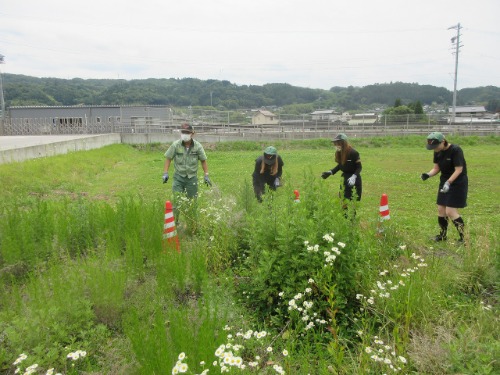
Extermination of invasive alien species in the plant's adjustment pond
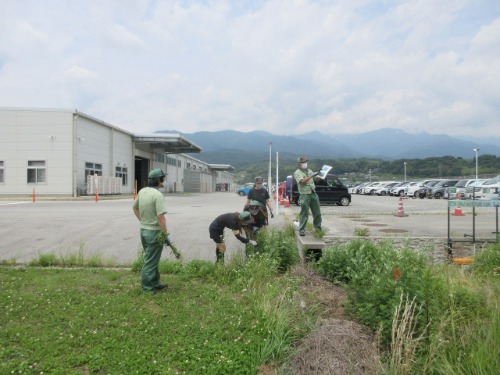
Extermination of invasive alien species in the plant's adjustment pond
In accordance with the "Forest Foster Parent Promotion Project" promoted by Nagano Prefecture, we have signed a "Forest Foster Parent Agreement" with Toyooka Village to cooperate in the maintenance of the village forest in Toyooka Village, and are carrying out conservation activities.
The project was suspended for two years due to COVID-19, but resumed in June 2022, with the clearing of undergrowth in the satoyama near the village ground of Toyookaoka Village.
The project was suspended for two years due to COVID-19, but resumed in June 2022, with the clearing of undergrowth in the satoyama near the village ground of Toyookaoka Village.
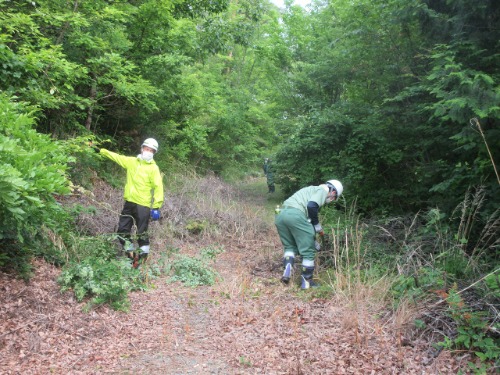
Conservation activities in village forests in Toyooka Village
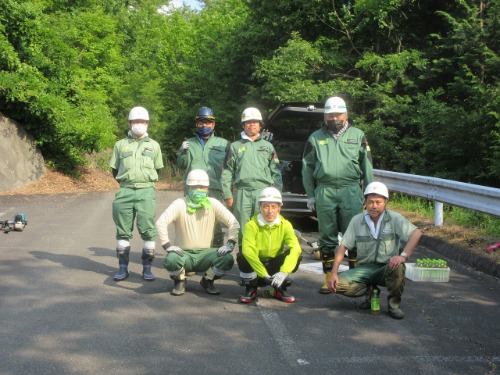
Conservation activities in village forests in Toyooka Village
Ibaraki Plant
At the Ibaraki Plant, we conduct surveys on water quality, vegetation, aquatic life and birds on the Sonobe River where factory wastewater is discharged to. Because the Sonobe River is used as agricultural irrigation water, we take great care in safeguarding the quality of discharge water. Because electrical conductivity is lower and transparency is higher in the water at the plant water discharge area than in other stretches of the Sonobe River, we believe that plant wastewater management is acceptable. A water tank has been installed at the entrance to the plant offices; fish caught in the Sonobe River are able to live in the tank, which contains discharge water from the plant. In the vegetation survey, einae, a species designated as semi-endangered by Ibaraki Prefecture, were confirmed in the plant.
We started surveying birds at the plant in 2015, and have been continuing our survey activities as well as conservation activities at Sonobe river. By comparing the results of our observations with those of the Sonobe River and considering the differences in the environment, we have become more familiar with the creatures around us.
Starting in 2019, we have organized a new "Survey on the Living Environment of the Grey-faced buzzard(Butastur indicus)" to survey the vegetation and small animals (amphibians and reptiles) in the plant, focusing on the Grey-faced buzzard, which is as a Vulnerable, as one of the indicators for environmental conservation.
In 2020, we installed a perching tree for the sasiba (Cervus nippon yesoensis) in the plant.
We have confirmed that the sasiba has used the tree several times.
We have also observed the sasiba flying over the area around the plant.
These activities have been carried out with guidance from the Wild Bird Society of Japan (Ibaraki Office), and from the Omitama Wildlife Association. The activities implemented at the Ibaraki Plant to safeguard biodiversity have been featured on the Omitama Wildlife Association’s website.
In recognition of the above activities, we participated in the poster session of the World Lake Conference (Lake Kasumigaura, Ibaraki, Japan, 2018) held at the Tsukuba International Congress Center in October last year.
In 2021, we are continuing the activity while taking measures to prevent COVID-19 infection.
We started surveying birds at the plant in 2015, and have been continuing our survey activities as well as conservation activities at Sonobe river. By comparing the results of our observations with those of the Sonobe River and considering the differences in the environment, we have become more familiar with the creatures around us.
Starting in 2019, we have organized a new "Survey on the Living Environment of the Grey-faced buzzard(Butastur indicus)" to survey the vegetation and small animals (amphibians and reptiles) in the plant, focusing on the Grey-faced buzzard, which is as a Vulnerable, as one of the indicators for environmental conservation.
In 2020, we installed a perching tree for the sasiba (Cervus nippon yesoensis) in the plant.
We have confirmed that the sasiba has used the tree several times.
We have also observed the sasiba flying over the area around the plant.
These activities have been carried out with guidance from the Wild Bird Society of Japan (Ibaraki Office), and from the Omitama Wildlife Association. The activities implemented at the Ibaraki Plant to safeguard biodiversity have been featured on the Omitama Wildlife Association’s website.
In recognition of the above activities, we participated in the poster session of the World Lake Conference (Lake Kasumigaura, Ibaraki, Japan, 2018) held at the Tsukuba International Congress Center in October last year.
In 2021, we are continuing the activity while taking measures to prevent COVID-19 infection.
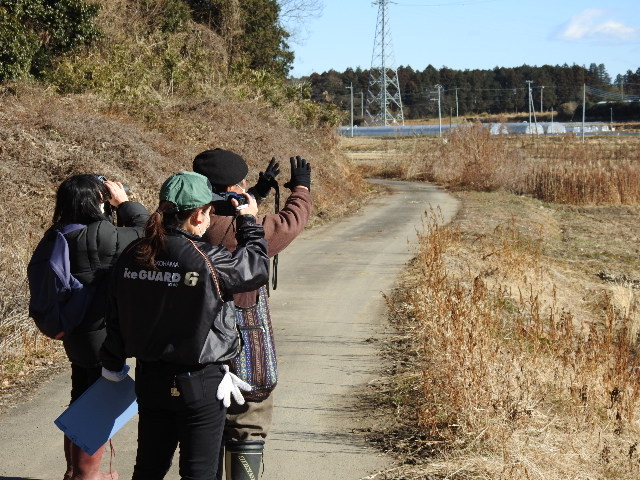
Wild bird survey at Sonobe River
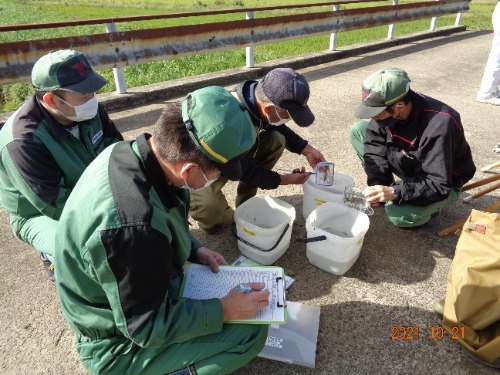
Aquatic life survey at Sonobe River
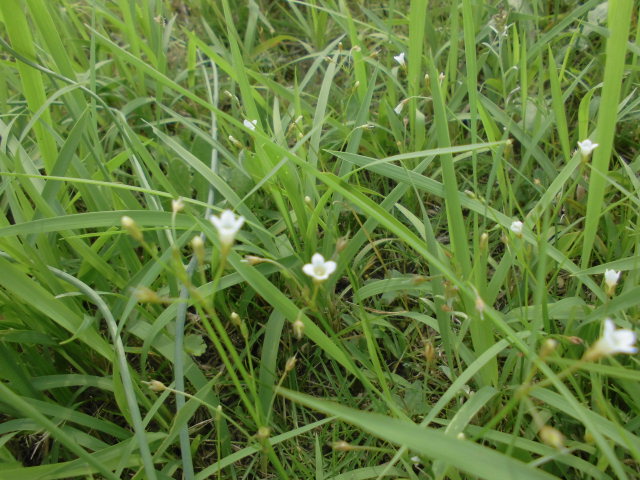
Rare plant (Ainae)
Yokohama Tire Retread Co., Ltd. Hokkaido Plant (YTRH)
Located adjacent to Lake Utonai, an internationally famous migratory bird gathering place where the Wild Bird Society of Japan opened the first sanctuary in Japan, YTRH is the only factory in the Yokohama Group that is in this kind of precious environment.
To preserve this precious place, we have continued cleanup activities around Lake Utonai and the Nature Center since 2017. In recent years, together with the City of Tomakomai, we have been conducting cleanups twice a year in the spring and fall as "Zero Garbage Days.
In the summer, we also conduct the "Invasive Species Extraction Activity," which has been a regular event since 2017.
The activity started with 8 participants, then the number of CSRs, YTJ dealers, sales warehouses, and their families... and each year the number of volunteers has increased to nearly 20, making the activity more dense.
Unfortunately, due to COVID-19, the gathering of volunteers was discontinued, and the entire YTRH (12 members) switched to a reduced activity.
The area had been filled with non-native plants, but thanks to annual activities that take into account the timing of removal and other factors, the non-native grasses are now almost invisible, and many native plants such as mugwort have grown up.
To preserve this precious place, we have continued cleanup activities around Lake Utonai and the Nature Center since 2017. In recent years, together with the City of Tomakomai, we have been conducting cleanups twice a year in the spring and fall as "Zero Garbage Days.
In the summer, we also conduct the "Invasive Species Extraction Activity," which has been a regular event since 2017.
The activity started with 8 participants, then the number of CSRs, YTJ dealers, sales warehouses, and their families... and each year the number of volunteers has increased to nearly 20, making the activity more dense.
Unfortunately, due to COVID-19, the gathering of volunteers was discontinued, and the entire YTRH (12 members) switched to a reduced activity.
The area had been filled with non-native plants, but thanks to annual activities that take into account the timing of removal and other factors, the non-native grasses are now almost invisible, and many native plants such as mugwort have grown up.
♦Non-native plant “Solidago gigantea var. leiophylla” removal
Friday, July 9, 2021
At first, the fixed-point observation site where we have been removing the plants every year was occupied by "non-native" plants, and when we finished removing the plants, there was nothing but grass all around the area. As a result of the continued removal activities, many "native plants" grew wild, and it became difficult to find non-native plants. After the removal work was completed, there were still many native plants, and the situation did not change much.
It was good that we continued to remove the plants at the time when we could expect the best results, and the Wild Bird Society of Japan gave us a high evaluation, saying, "This is a good model for other groups to follow.
We finished our work at the fixed observation point early and moved to a location that could be seen from the window of the Nature Center. This will be the site of our activities from now on.
We will continue to work toward the goal of having more of the "Spiraea salicifolia," previously listed as an "endangered species," growing wild!
At first, the fixed-point observation site where we have been removing the plants every year was occupied by "non-native" plants, and when we finished removing the plants, there was nothing but grass all around the area. As a result of the continued removal activities, many "native plants" grew wild, and it became difficult to find non-native plants. After the removal work was completed, there were still many native plants, and the situation did not change much.
It was good that we continued to remove the plants at the time when we could expect the best results, and the Wild Bird Society of Japan gave us a high evaluation, saying, "This is a good model for other groups to follow.
We finished our work at the fixed observation point early and moved to a location that could be seen from the window of the Nature Center. This will be the site of our activities from now on.
We will continue to work toward the goal of having more of the "Spiraea salicifolia," previously listed as an "endangered species," growing wild!
<Events in Tomakomai City>
♦Spring Cleanup Month "Zero Garbage Day" on Sunday, April 18, 2021
Together with Tomakomai City, all YTRH employees cleaned up a large area, including walking paths around Lake Utonai Sanctuary.
After the snow melts, we always find a large amount of sake bottles and other household trash, which is very disappointing.
♦Fall Cleaning Month "Day of Zero Garbage" on Sunday, October 18,2021
All YTRH employees together with Tomakomai City cleaned up the area around Lake Utonai Sanctuary. The rain from the previous day had stopped, and although it was a chilly day, we were able to complete the activity without incident.
Although only half a year had passed since the last time, there was still household garbage and many masks were seen because of the corona disaster.
The area around Lake Utonai was also cleaned up during this time of the year when the leaves are turning red.
Spring Cleanup "Zero Garbage Day" on Sunday, April 17, 2022
All YTRH members (12 people) conducted a spring cleaning around Lake Utonai Sanctuary.
Every year after the snow melts, a large amount of garbage is collected for the cleanup.
Unfortunately, we collected a large amount of trash again this year, including waste tires.
Although it was still cold, the area around Lake Utonai Sanctuary became very clean for the summer.
♦Spring Cleanup Month "Zero Garbage Day" on Sunday, April 18, 2021
Together with Tomakomai City, all YTRH employees cleaned up a large area, including walking paths around Lake Utonai Sanctuary.
After the snow melts, we always find a large amount of sake bottles and other household trash, which is very disappointing.
♦Fall Cleaning Month "Day of Zero Garbage" on Sunday, October 18,2021
All YTRH employees together with Tomakomai City cleaned up the area around Lake Utonai Sanctuary. The rain from the previous day had stopped, and although it was a chilly day, we were able to complete the activity without incident.
Although only half a year had passed since the last time, there was still household garbage and many masks were seen because of the corona disaster.
The area around Lake Utonai was also cleaned up during this time of the year when the leaves are turning red.
Spring Cleanup "Zero Garbage Day" on Sunday, April 17, 2022
All YTRH members (12 people) conducted a spring cleaning around Lake Utonai Sanctuary.
Every year after the snow melts, a large amount of garbage is collected for the cleanup.
Unfortunately, we collected a large amount of trash again this year, including waste tires.
Although it was still cold, the area around Lake Utonai Sanctuary became very clean for the summer.
The year of 2021 marks the 40th anniversary of the opening of the Lake Utonai Sanctuary by the Wild Bird Society of Japan.
According to the rangers of the Lake Utonai Sanctuary, the Conservation Project Office of the Wild Bird Society of Japan, there are plans for activities such as the "Calling Blakiston's Fish Owl (Ketupa blakistoni) Project" and the "Calling Japanese crane (Grus japonensis)Tanager Project”.
All employees will continue to work together on environmental activities and sanctuary support activities at Lake Utonai, and will also continue to engage in meaningful activities together with their families, people from affiliated companies, and the Wild Bird Society of Japan.
According to the rangers of the Lake Utonai Sanctuary, the Conservation Project Office of the Wild Bird Society of Japan, there are plans for activities such as the "Calling Blakiston's Fish Owl (Ketupa blakistoni) Project" and the "Calling Japanese crane (Grus japonensis)Tanager Project”.
All employees will continue to work together on environmental activities and sanctuary support activities at Lake Utonai, and will also continue to engage in meaningful activities together with their families, people from affiliated companies, and the Wild Bird Society of Japan.
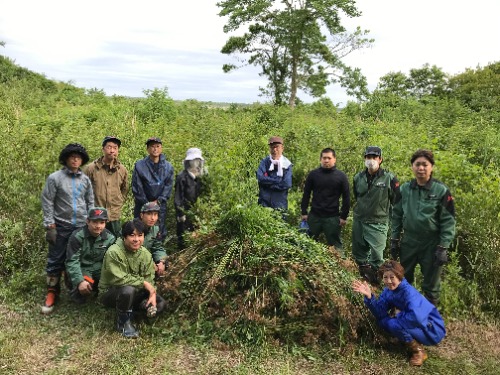
Pulling out giant goldenrod(Solidago gigantea var. leiophylla) around Lake Utonai
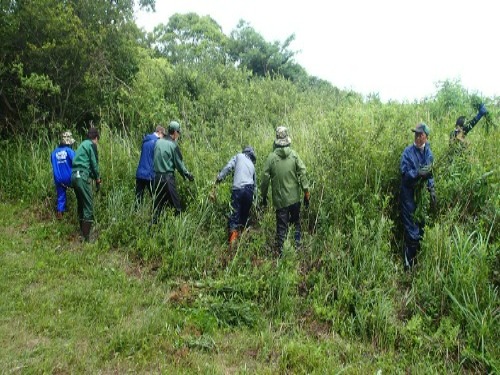
Pulling out giant goldenrod(Solidago gigantea var. leiophylla) around Lake Utonai
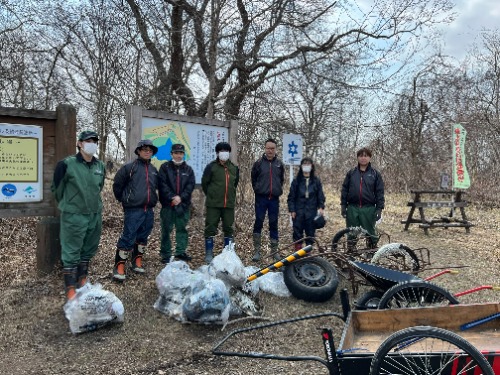
Cleanup work around Lake Utonai
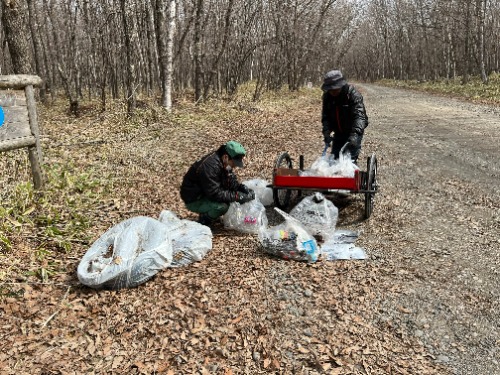
Cleanup work around Lake Utonai
Yokohama Tire Retread Co., Ltd. Saitama Plant(YTRS)
Yokohama Tire Retread Saitama Plant has been participating in the activities of Miyoshi Green Support Team since November 2015. The Miyoshi Green Support Team is working under the slogan of "Creating a livable city through the conservation and maintenance of flatland forests, with the aim of building a rich rapport. Activities are held on the third Sunday of every month, with about 20 local residents and companies participating each time. In the "Fujikubo Flatland Forest," the recycling method of making compost from fallen leaves that has continued since the Edo era (environment with historical value) and biodiversity (rich natural environment) are present to today. In 2015, a part of the activity area was certified as the Green Trust Conservation Area No. 14 of Saitama Prefecture. The Green Trust is an initiative to preserve the outstanding natural and historical environment of Saitama Prefecture by converting it into public land with the cooperation of residents, companies, and organizations in order to preserve it for future generations.
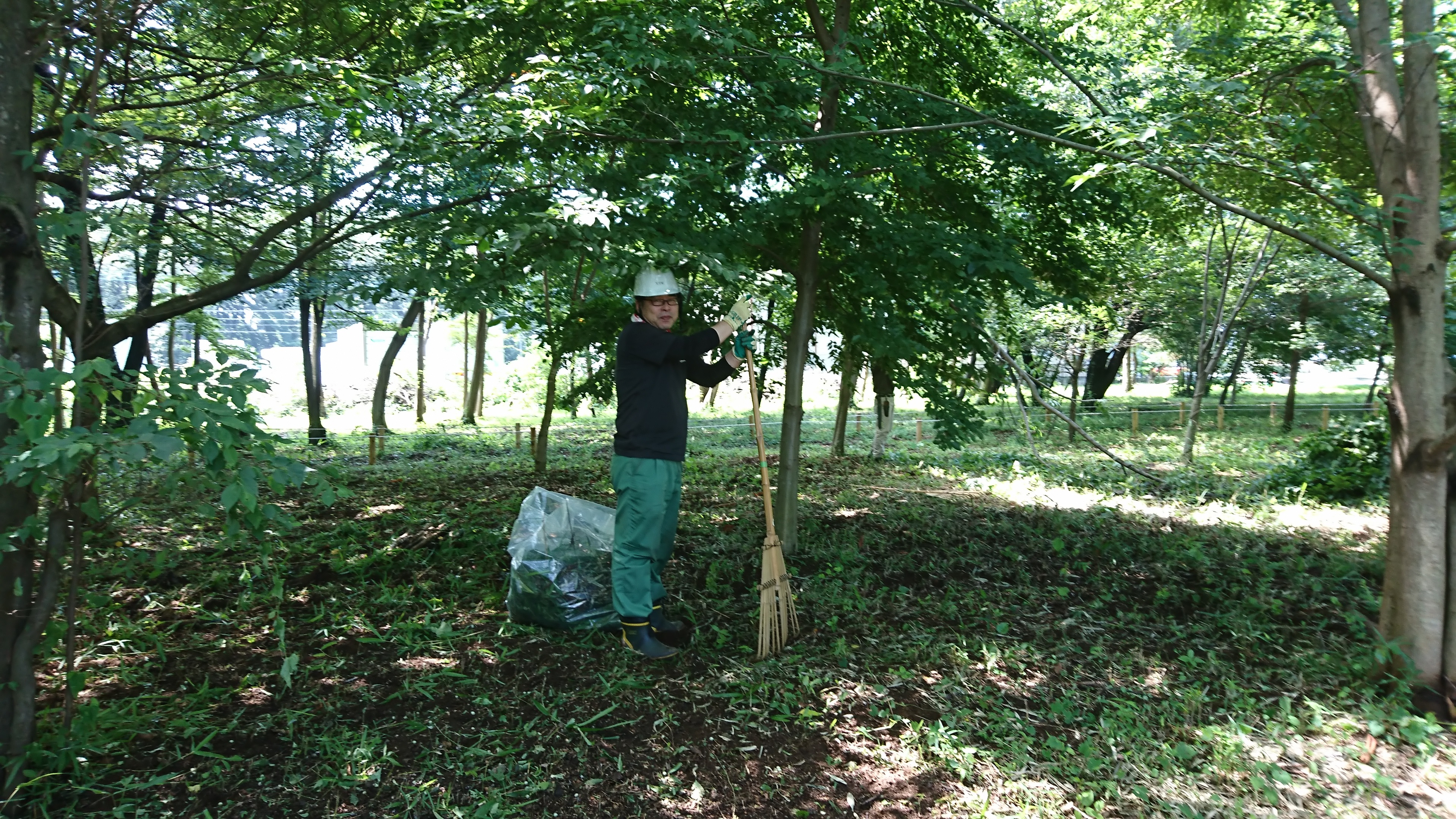
Cutting down and clearing away dead trees (July 19, 2020)
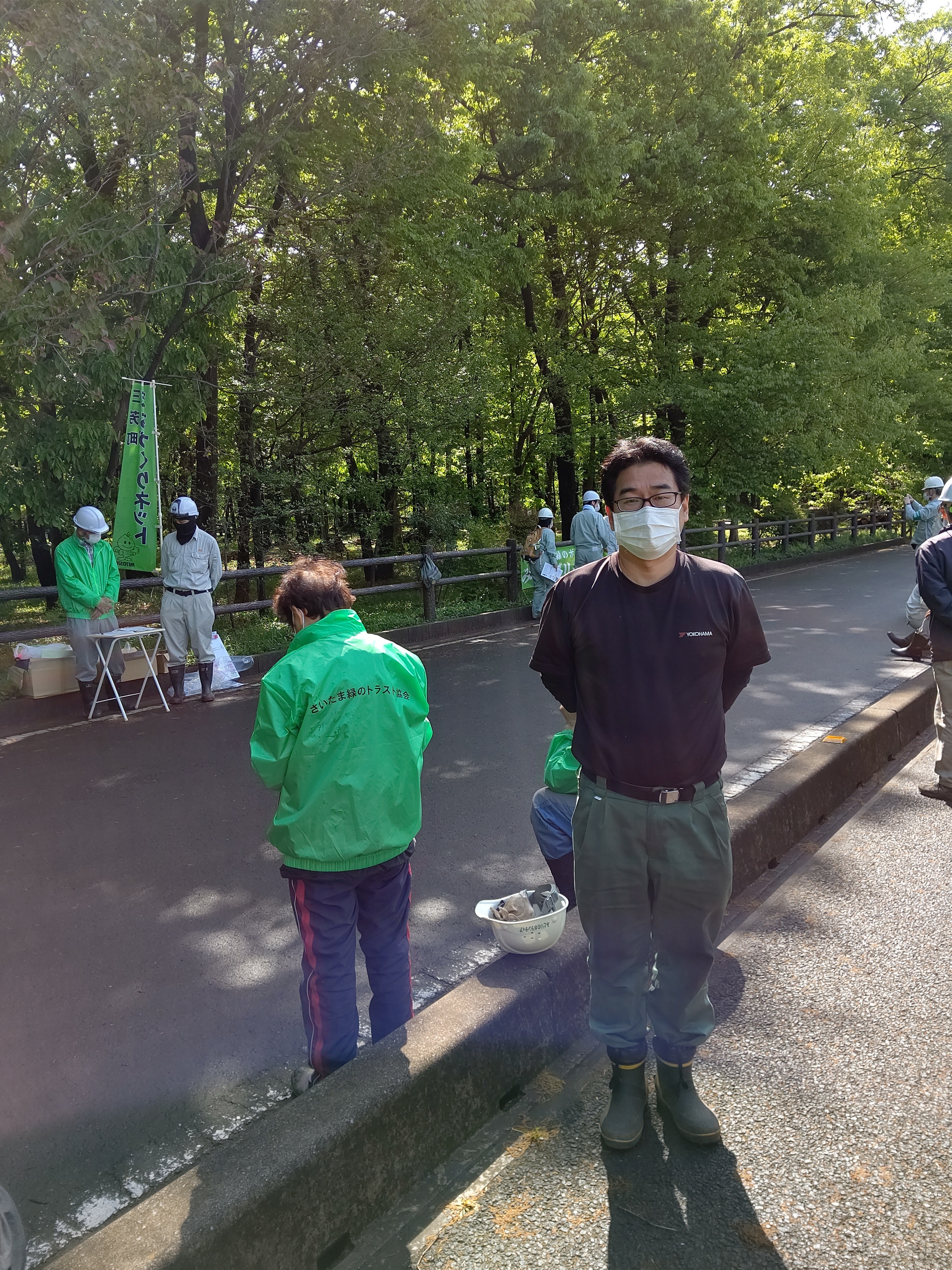
Pulling weeds and picking up litter in Satoyama (April 18, 2021)
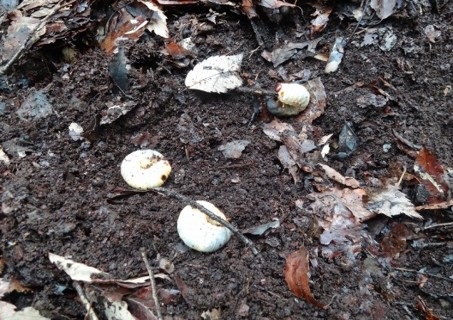
Making compost from fallen leaves... Many beetle larvae are living in the compost.
Yokohama Tire Retread Co., Ltd. Nagoya Plant(YTRN)
While many of our activities in FY2021 are limited by COVID-19, we have been engaged in the 6th phase tree planting of the Forever Forest Activities, environmental conservation activities, and biodiversity conservation activities
Trees planted in the Forever Forest have grown to a size where nest boxes can be hung, and we are planning to install nest boxes on a trial basis in FY2022.
In the restoration of fallow rice fields in the external activity area, we planted rice again in 2022. While preserving precious ecosystems, we also incorporate innovations that participants can enjoy, and continue ecosystem observation activities with local residents, observing insects, plants, birds, etc., summarizing the results, and learning and being moved by the various changes in spring, summer, fall, and winter with participants, with the aim of establishing this activity as a place to experience the importance of nature that must be preserved. We are aiming to make the event a place where participants can learn and experience the importance of nature that must be preserved.
In 2022, we are planning to hold a commemorative event to celebrate our 10th anniversary, and we would like to introduce our activities to as many people as possible and expand the circle of our activities.
We, the employees, will continue to share what we have learned from our activities with many people, aiming to develop human resources who can contribute to biodiversity activities and environmental preservation, as well as to develop our business sites.
In the restoration of fallow rice fields in the external activity area, we planted rice again in 2022. While preserving precious ecosystems, we also incorporate innovations that participants can enjoy, and continue ecosystem observation activities with local residents, observing insects, plants, birds, etc., summarizing the results, and learning and being moved by the various changes in spring, summer, fall, and winter with participants, with the aim of establishing this activity as a place to experience the importance of nature that must be preserved. We are aiming to make the event a place where participants can learn and experience the importance of nature that must be preserved.
In 2022, we are planning to hold a commemorative event to celebrate our 10th anniversary, and we would like to introduce our activities to as many people as possible and expand the circle of our activities.
We, the employees, will continue to share what we have learned from our activities with many people, aiming to develop human resources who can contribute to biodiversity activities and environmental preservation, as well as to develop our business sites.
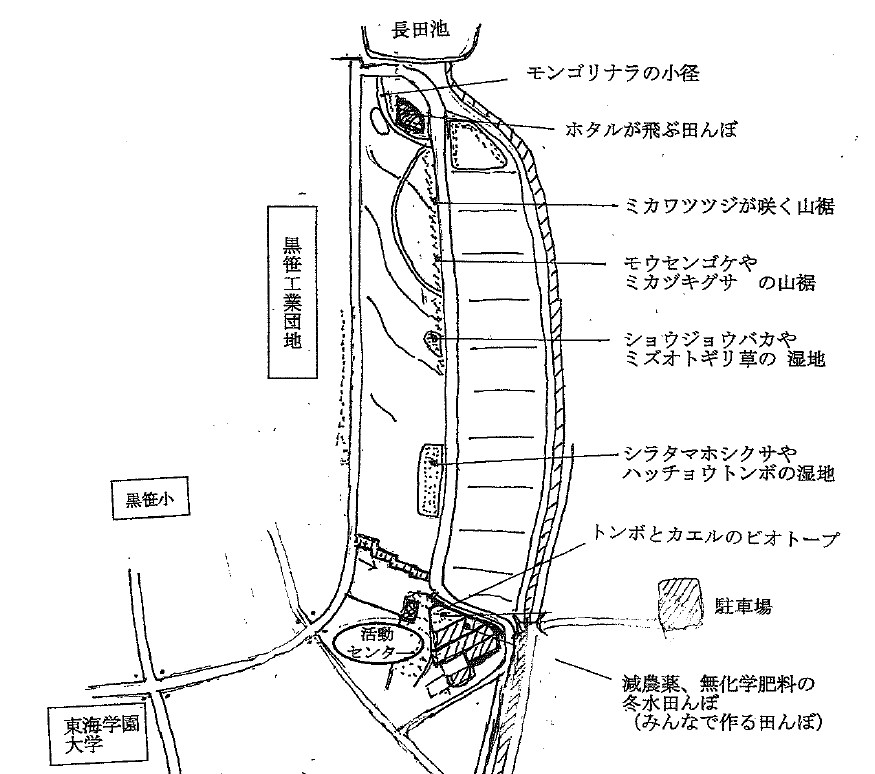
Illustration of activity area
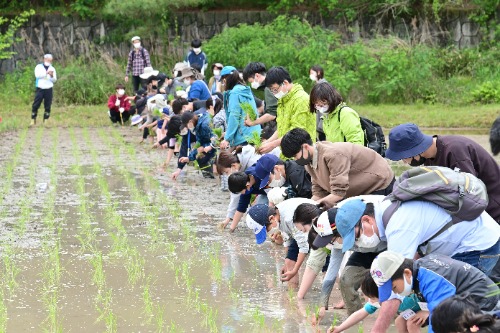
Restoration of fallow rice fields (rice planting)
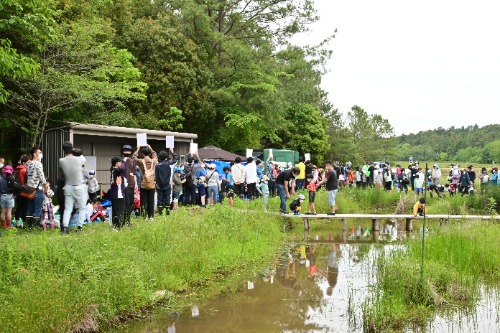
Biotope observation meeting
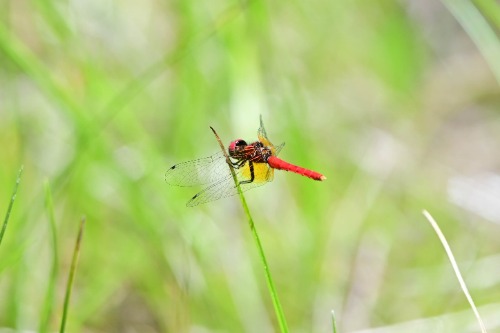
Endangered Nannophya pygmaea
Yokohama Tire Manufacturing (Thailand) Co., Ltd. (YTMT)
Yokohama Tire Manufacturing (Thailand) Co., Ltd. (YTMT), a tire plant in Thailand, is located within an industrial park. Because water intake and discharge is centrally managed at industrial parks in Thailand, unlike the plants in Japan, it is not possible to confirm the impact of individual plants on water intake and discharge areas. For this reason, we monitor birds and insects in order to assess the green areas (Forever Forests and biotopes) on plant premises. In order to recreate a rich ecosystem within the plant premises, we are creating two types of biotope—marshes and ponds. We have been carrying out further planting in order to preserve the connection between aquatic and land wildlife. We also secure habitats for local species and conduct environmental education for employees through these activities.
Additionally, we carried out activities to create areas of saline soil, with the aim of helping preserve the wildlife within the Khao Yai National Park, a world heritage site.
Additionally, we carried out activities to create areas of saline soil, with the aim of helping preserve the wildlife within the Khao Yai National Park, a world heritage site.
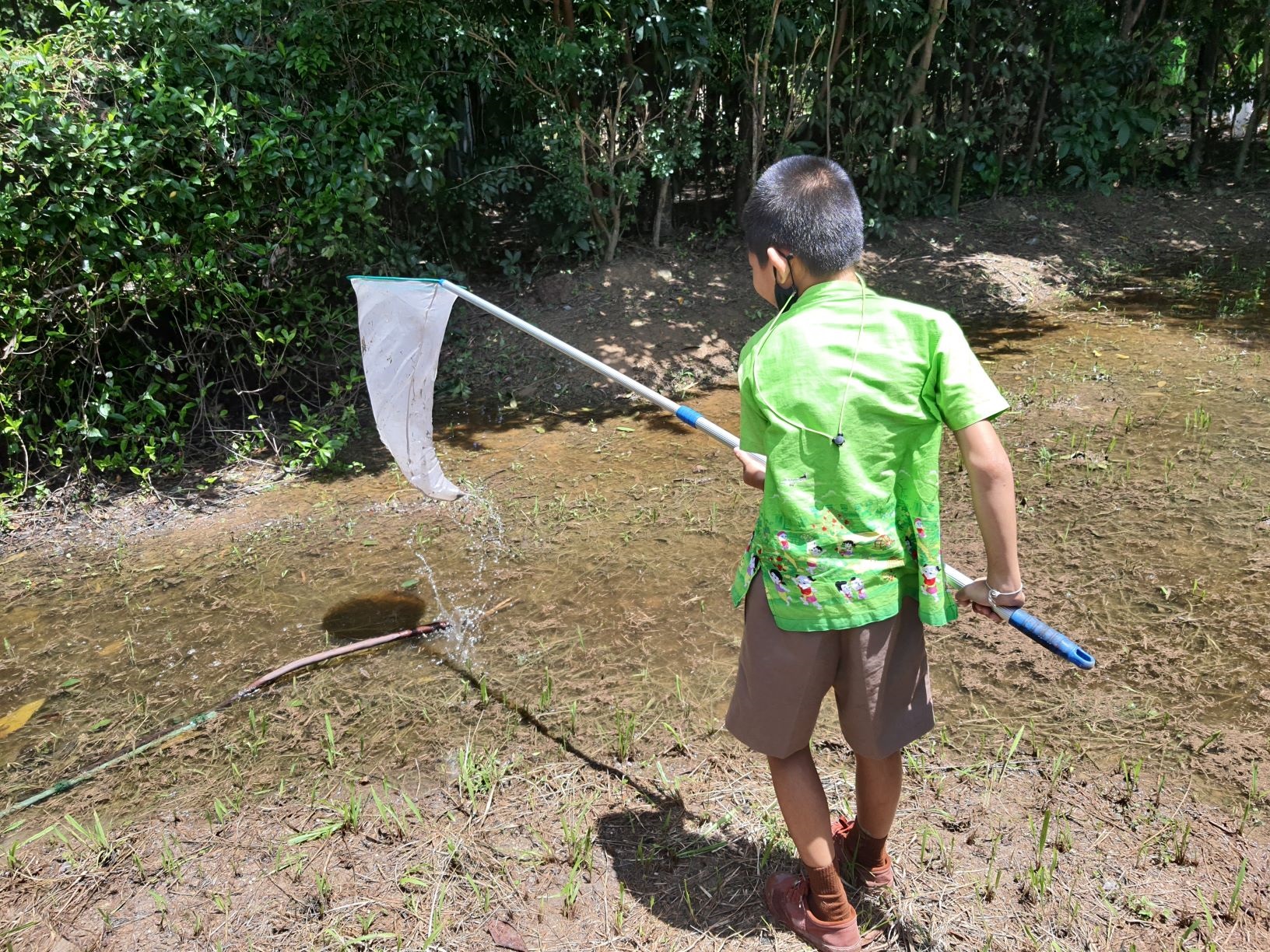
Insect survey in biotope
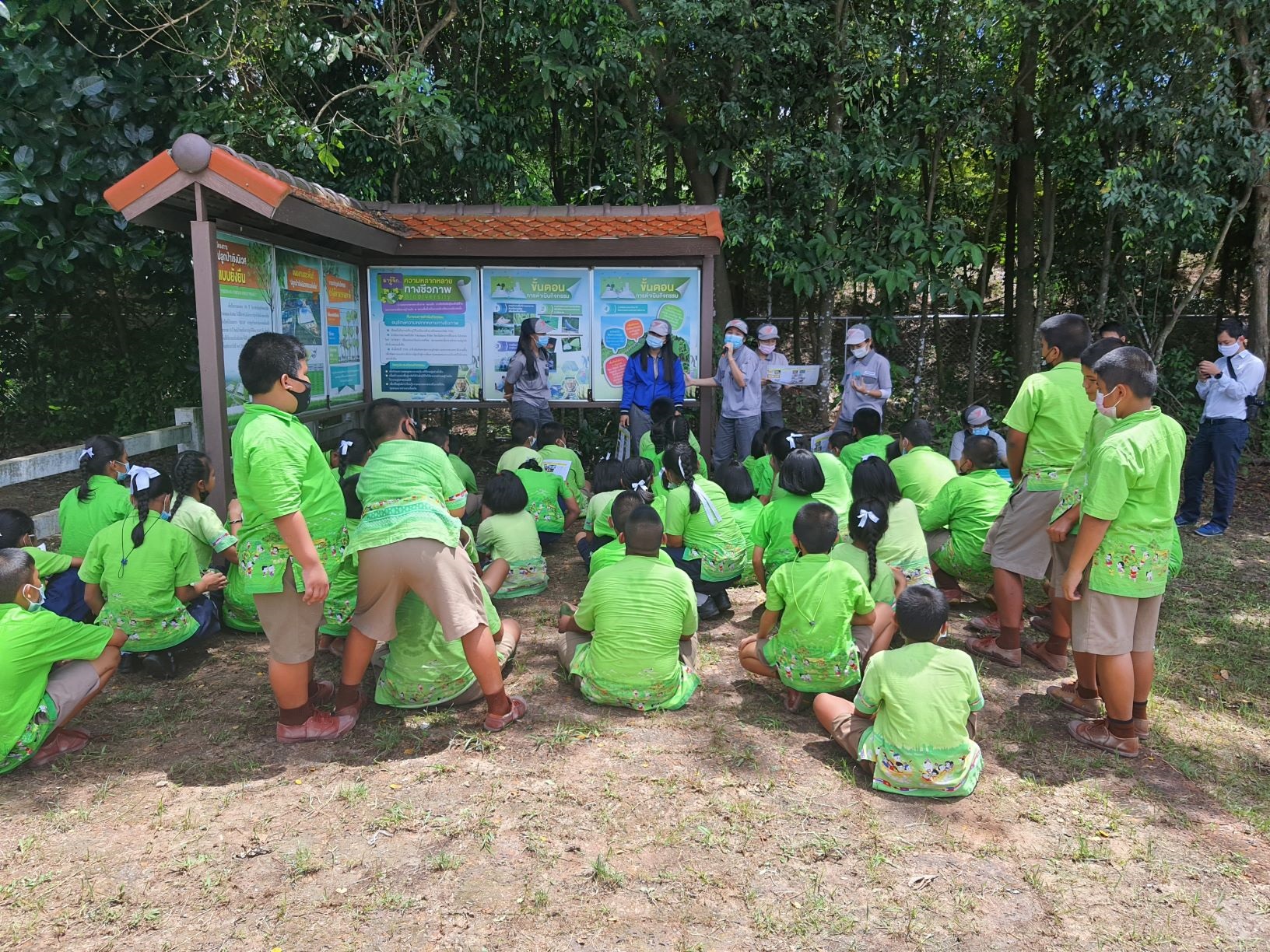
Insect survey in biotope
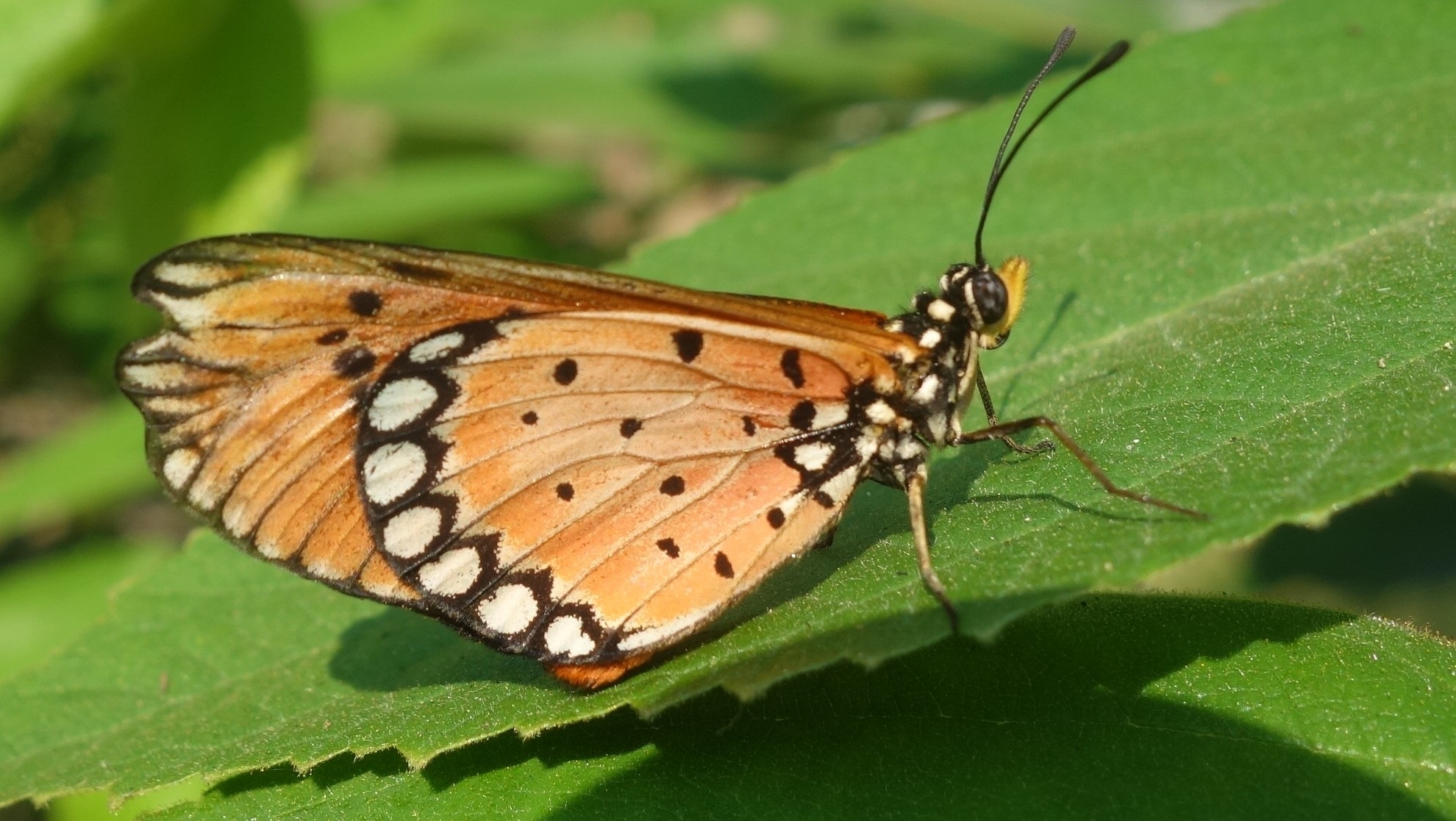
Acraea violae
Y.T. Rubber Co. Ltd. (YTRC)
YTRC is located in Surat Thani Province in southern Thailand, and is the only natural rubber processing plant in the Yokohama Rubber Group. A lot of water is used in the natural rubber manufacturing process, but YTRC has realized the effective use of water resources by 100% water recycling. We have also reduced the total amount of water usage by automating the appropriate adjustment of water usage according to the increase and decrease of production volume, and at the same time, we are striving to reduce energy consumption, as well as improving the efficiency of sedimentation and purification ponds to maintain the water quality at the same level as that of nearby rivers.
There is a large buffer pond on the site, and including the surrounding area, we are striving to maintain the natural environment that existed before the plant was built. Since November 2014, we have been monitoring the fish habitat and water quality in the pond on a monthly basis. When the water level rises during the rainy season, the pond is connected to the nearby Tapi River. In a recent survey, we found 23 species of fish breeding in the area.
In the forest surrounding the reservoir and the area where the trees planted as part of the Forever Forest activities are growing, 21 species of birds have been observed so far, and in the evenings, the sound of lively birdsong can be heard.
We will continue to maintain the trees and the environment of the reservoir in the future. In particular, the community will continue to maintain and improve the water quality of the reservoir and, with the cooperation of the local government, carry out activities to improve biodiversity, including the release of appropriate species of fish.
There is a large buffer pond on the site, and including the surrounding area, we are striving to maintain the natural environment that existed before the plant was built. Since November 2014, we have been monitoring the fish habitat and water quality in the pond on a monthly basis. When the water level rises during the rainy season, the pond is connected to the nearby Tapi River. In a recent survey, we found 23 species of fish breeding in the area.
In the forest surrounding the reservoir and the area where the trees planted as part of the Forever Forest activities are growing, 21 species of birds have been observed so far, and in the evenings, the sound of lively birdsong can be heard.
We will continue to maintain the trees and the environment of the reservoir in the future. In particular, the community will continue to maintain and improve the water quality of the reservoir and, with the cooperation of the local government, carry out activities to improve biodiversity, including the release of appropriate species of fish.
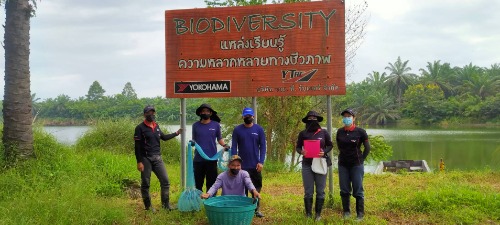
Biodiversity survey activities at buffer ponds
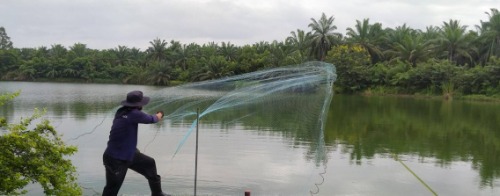
Fish catching research activities using cast nets
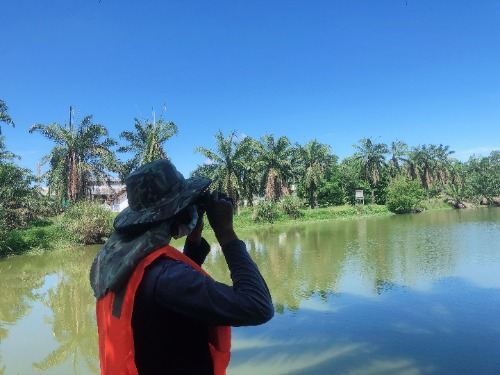
Bird habitat survey activities
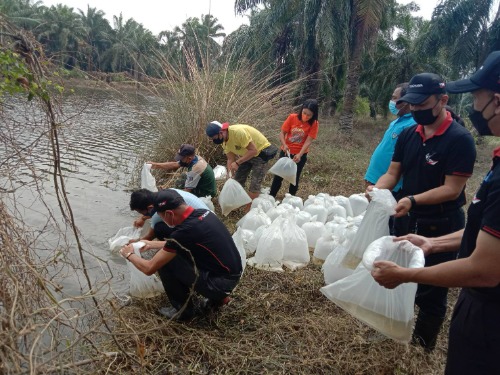
Release of 30,000 fry provided by the Thai Department of Fisheries into the reservoir
Hangzhou Yokohama Tire Co., Ltd. (CHZY)
CHZY is located in an industrial park in Hangzhou, China. Although the industrial park has a green belt, it is not rich in diversity due to the small number of tree species. For this reason, we are conducting a survey to evaluate the Forever Forest and its inhabitants in the hope that CHZY's Forever Forest will become a habitat for forest creatures. In order to create a more favorable ecological environment, on March 12, 2020 (the day of the tree-planting ceremony), the company managers participated as team members to go around the perimeter of the company to pick up litter.
We will continue these activities in fiscal 2021.
In addition, we pick up trash in the river around the plant once every six months.
As part of the government's environmental protection program, CHZY has been entrusted with the management of a 2,000-square-meter plot of land in the vicinity of the CHZY site as the "Yokohama Reserved Forest”. A total of 30 trees were planted in 2021, bringing the total number of trees planted so far to 150.
We will continue these activities in fiscal 2021.
In addition, we pick up trash in the river around the plant once every six months.
As part of the government's environmental protection program, CHZY has been entrusted with the management of a 2,000-square-meter plot of land in the vicinity of the CHZY site as the "Yokohama Reserved Forest”. A total of 30 trees were planted in 2021, bringing the total number of trees planted so far to 150.
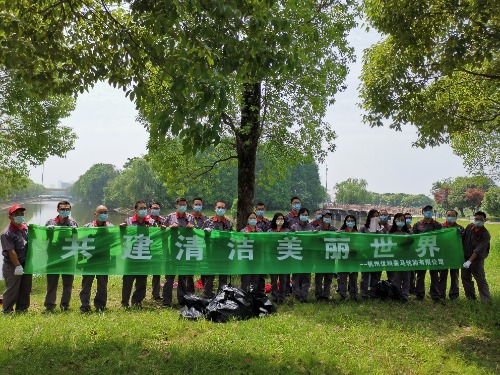
Picking up trash in the river around the plant
Yokohama Tire Philippines, Inc. (YTPI)
YTPI, which operates within the Clark Special Economic Zone in Pampanga, Republic of the Philippines, has been promoting biodiversity and environmental conservation through a series of activities involving its employees and neighboring communities.
These activities include ongoing Millennium Woods activities, ongoing tree surveys, wildlife surveys, and the provision of seedlings and support for activities, as well as the launch of a new initiative called "Green Space" activities.
In 2022 alone, YTPI has already donated 100 saplings and plans to plant 400 trees inside and outside the plant.
YTPI has also confirmed that the site is home to 43 species of wildlife, including four bird species and one reptile species of "Least Concern" on the Red List of the International Union for Conservation of Nature (IUCN).
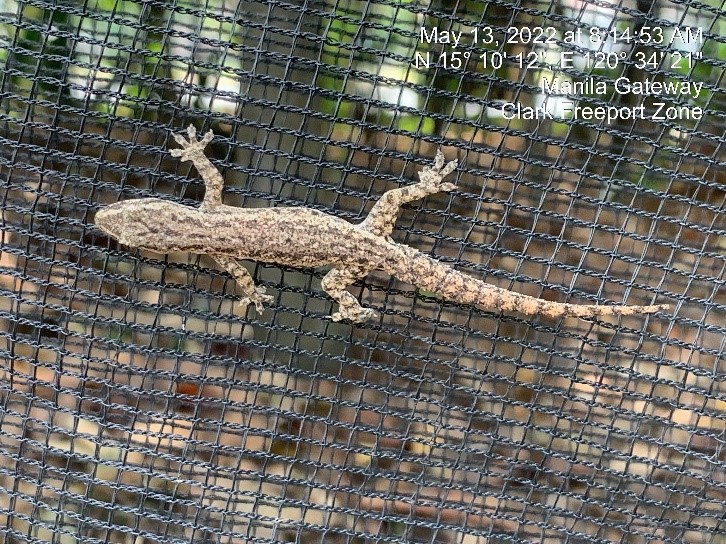
Observed lizards (Urosaurus ornatus) and wild birds (Rhipidura nigritorquis)
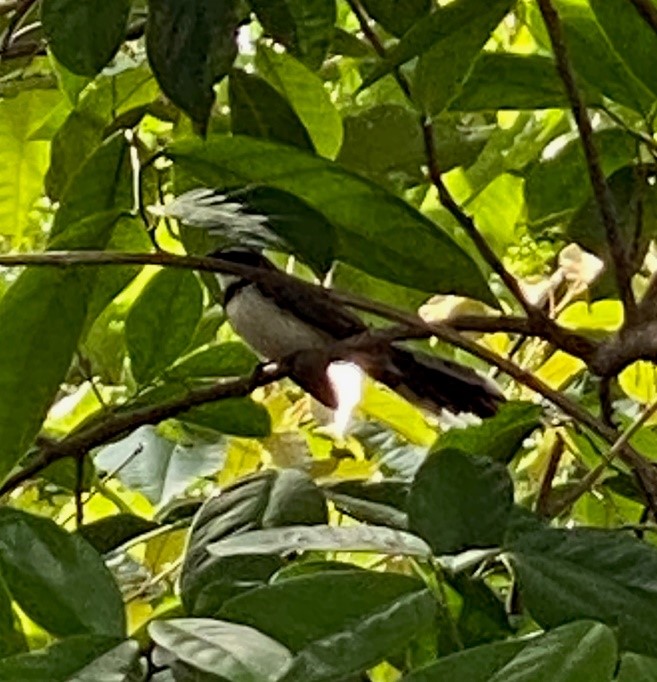
Observed lizards (Urosaurus ornatus) and wild birds (Rhipidura nigritorquis)
The Green Space initiative encourages employees to plant vegetables in open spaces within the company to increase their independence in food sustainability, raise public health awareness for more nutritious eating habits, increase biodiversity by increasing the number of plant species, and finally, by promoting an environmentally friendly lifestyle The goal is to support carbon neutrality.
As a result, in one year, 10 departments have initiated this activity within their respective areas and have already cultivated and distributed their harvests.
In addition, “YTPI Vegetables for Life” was conceived and implemented to expand this activity.
This expansion expanded community outreach by adopting a school vegetable garden, providing vegetable garden supplies as support, and coordinated the harvest to be provided to the cafeteria concessions as a source of vegetables.
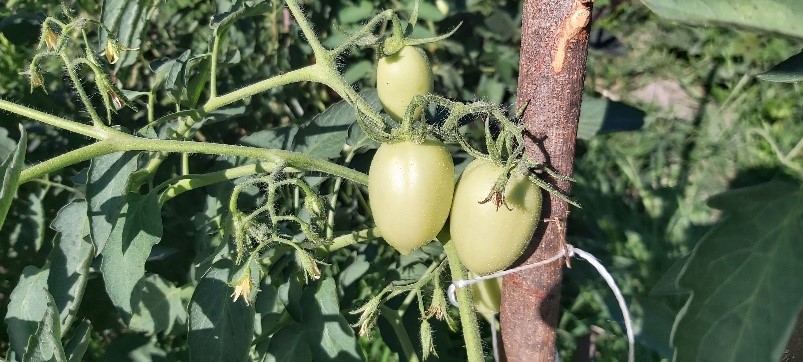
Harvest from Green Spaces
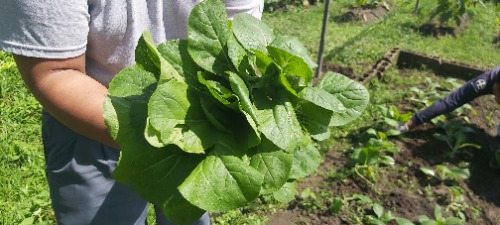
Harvest from Green Spaces
Through these activities, YTPI will reduce its carbon footprint to mitigate global warming and climate change and help neighboring communities with their environmental concerns and issues.
It is hoped that YTPI's activities will raise awareness of the importance of the affected ecosystems and promote proactive conservation efforts in the community.
It is hoped that YTPI's activities will raise awareness of the importance of the affected ecosystems and promote proactive conservation efforts in the community.
Yokohama Tire Manufacturing Virginia(YTMV)
YTMV is located at the foot of the Appalachian Mountains of Virginia in the eastern United States. The area offers a vibrant natural environment similar to Japan where you can experience four distinct seasons. The growth of the Forever Forest planted at the company’s factory has provided a natural habitat for a large variety of wildlife and wild fowl. We are carrying out activities to balance conservation of this natural environment and our production activities.
Since 2015, we have set up nest boxes to protect the breeding of the Eastern bluebird (Sialia sialis), and all employees watch over the baby birds as they grow.
Since 2015, we have set up nest boxes to protect the breeding of the Eastern bluebird (Sialia sialis), and all employees watch over the baby birds as they grow.
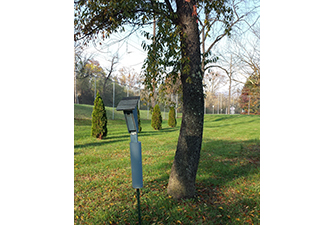
Nest for Eastern bluebird
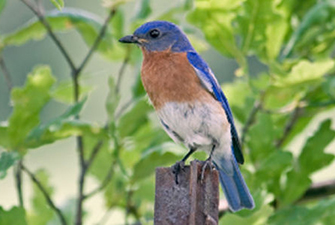
Eastern bluebird
Suzhou Yokohama Tire Co., Ltd (CSZY)
At Suzhou Yokohama Tire Co., Ltd (CSZY) located in a chemical industry area of Suzhou, China, we launched biodiversity activities jointly with the New District Environmental Protection Council and a Xuguan Town elementary school in December 2016. In 2019-2020, CSZY was recognized by Jiangsu Province as a "Provincial Environmental Protection Credential Enterprise".
In 2021, we held four joint biodiversity survey activities (two in February, one in May, one in October, and one in November) based on the environmental education base in the plant, with the participation of students, their families and teachers from Suzhou Wenxing Center Elementary School, Tong'an Center Elementary School, Dongshu Experimental Elementary School, and Yangshan Experimental Elementary School, and CSZY employees (190 people on four occasions). Biodiversity survey activities enable us to understand the status of the biological environment within the plant site, and also help us to preserve the local ecosystem and harmonize with the local community while conducting business activities at the plant.
In these activities so far, we have observed birds such as sparrows and egrets, plants such as Chinese tallow trees, hall’s crabapples, border privets, dandelions, morning glories, and daisies, insects such as bees and butterflies, and earthworms. We also picked up tree seeds in the activities and grew them as seedlings for our Forever Forest activities. In these survey activities, we not only observed these living creatures, but also learned about the growth of the Forever Forest, which was a good opportunity to deepen our understanding of how the growth of the forest has a positive impact on the local ecosystem.
In 2021, we held four joint biodiversity survey activities (two in February, one in May, one in October, and one in November) based on the environmental education base in the plant, with the participation of students, their families and teachers from Suzhou Wenxing Center Elementary School, Tong'an Center Elementary School, Dongshu Experimental Elementary School, and Yangshan Experimental Elementary School, and CSZY employees (190 people on four occasions). Biodiversity survey activities enable us to understand the status of the biological environment within the plant site, and also help us to preserve the local ecosystem and harmonize with the local community while conducting business activities at the plant.
In these activities so far, we have observed birds such as sparrows and egrets, plants such as Chinese tallow trees, hall’s crabapples, border privets, dandelions, morning glories, and daisies, insects such as bees and butterflies, and earthworms. We also picked up tree seeds in the activities and grew them as seedlings for our Forever Forest activities. In these survey activities, we not only observed these living creatures, but also learned about the growth of the Forever Forest, which was a good opportunity to deepen our understanding of how the growth of the forest has a positive impact on the local ecosystem.
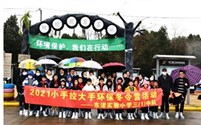
Everyone who participated in biodiversity activities
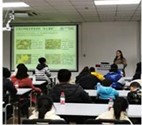
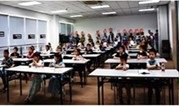
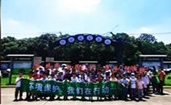
Everyone who participated in biodiversity activities
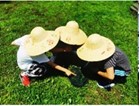
Children from Yangshan Central Elementary School and Tongan Experimental Elementary School observing living creatures
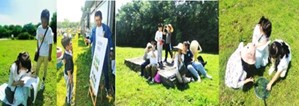

Children from Yangshan Central Elementary School and Tongan Experimental Elementary School observing living creatures
LLC Yokohama R.P.Z.(YRPZ)
In 2017, we collaborated with Voronezh State University of Forest Technology to plant one pine species (Pinus SylvestrysL.) on our plant site.
The purpose of this activity was to research how much pine trees will grow in an industrial belt and restore YRPZ’s biodiversity. In addition, this activity has been appraised as a biodiversity research activity. YRPZ and forest science experts from Voronezh State University of Forestry and Technologies researched the ideal conditions for the growth of trees. In May 2021, he participated in the Green Wave Project and planted 22 seedlings of “Tilia miqueliana” and “Sorbus commixta”.
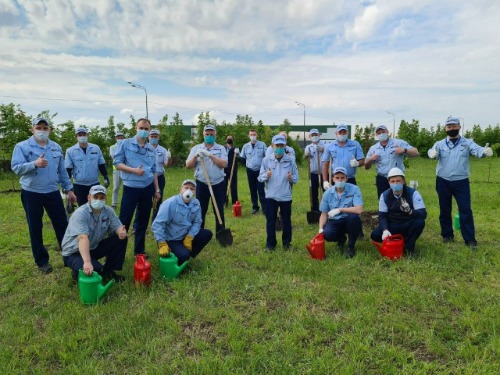
Tree planting at the Green Wave Project
Yokohama Tyre Vietnam Inc.(YTVI)
YTVI started an internal tree planting project with the Southern Institute of Ecology (SIE) at Lo Go - Xa Mat (LGXM) National Park in 2018, utilizing the expertise of the Forever Forest activities at the plant site. We have planted 500 trees of 7 different indigenous species on 1 hectare of land. It has been confirmed that the planted trees have formed a canopy over the past three years and the number of animal species living in the forest has been increasing every year (2018-2021). A total of 68 employees, from YTVI executives to new hires, have worked to protect and survey the trees planted over the past four years.
In June 2022, a closing ceremony for biodiversity conservation activities in LGXM National Park was held with the participation of key partners SEE and the LGXM National Park Board.
During the closing ceremony, a Memorandum of Understanding (MOU) was signed between YTVI and the LGXM National Park Board of Trustees to implement the necessary measures for future forest protection and fire prevention and to continue the management authority.
In June 2022, a closing ceremony for biodiversity conservation activities in LGXM National Park was held with the participation of key partners SEE and the LGXM National Park Board.
During the closing ceremony, a Memorandum of Understanding (MOU) was signed between YTVI and the LGXM National Park Board of Trustees to implement the necessary measures for future forest protection and fire prevention and to continue the management authority.
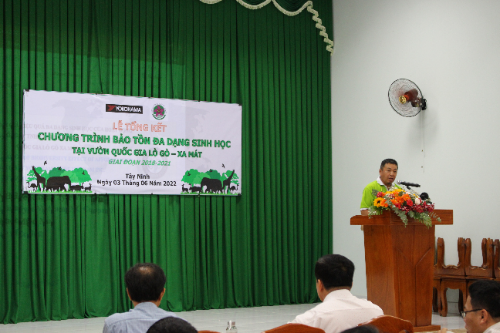
Closing remarks by YTVI President Yasuhiro Kurokawa
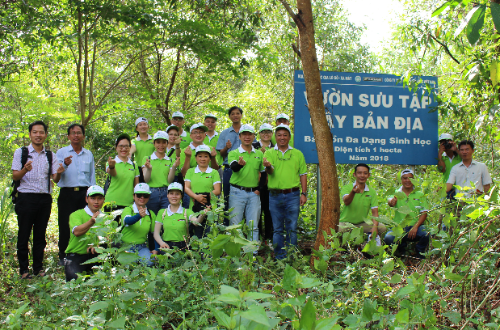
Group photo of project members in the forest
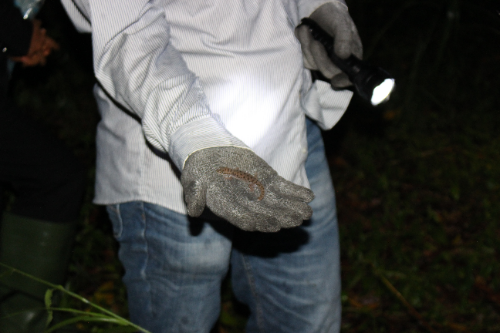
Organisms captured during the nighttime survey (gecko: scientific name Dixonius siamensis, spider: scientific name unconfirmed)
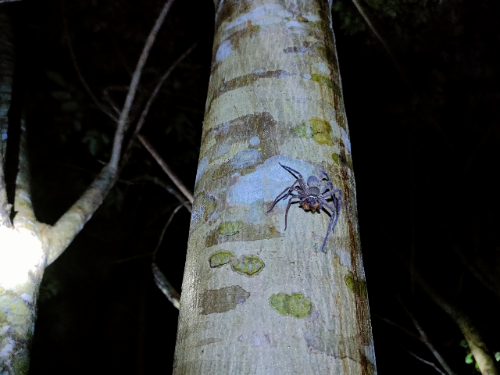
Organisms captured during the nighttime survey (gecko: scientific name Dixonius siamensis, spider: scientific name unconfirmed)
Issues and Future
Improvement Measures
Biodiversity is now recognized as a serious environmental risk as well as climate change.
In particular, we recognize the importance of initiatives and information disclosure that are consistent with the goals and approaches that are being identified in the process of developing the Post-Aichi Targets and the Task Force on Nature-related Financial Disclosures (TNFD).
In order to make efforts in line with the progress of these discussions and their penetration into the world, we will organize the key issues in the overall business activities of the Yokohama Rubber Group.
We will then promote activities in response to these issues and actively share information to deepen the understanding of our employees and stakeholders.
In particular, we recognize the importance of initiatives and information disclosure that are consistent with the goals and approaches that are being identified in the process of developing the Post-Aichi Targets and the Task Force on Nature-related Financial Disclosures (TNFD).
In order to make efforts in line with the progress of these discussions and their penetration into the world, we will organize the key issues in the overall business activities of the Yokohama Rubber Group.
We will then promote activities in response to these issues and actively share information to deepen the understanding of our employees and stakeholders.


